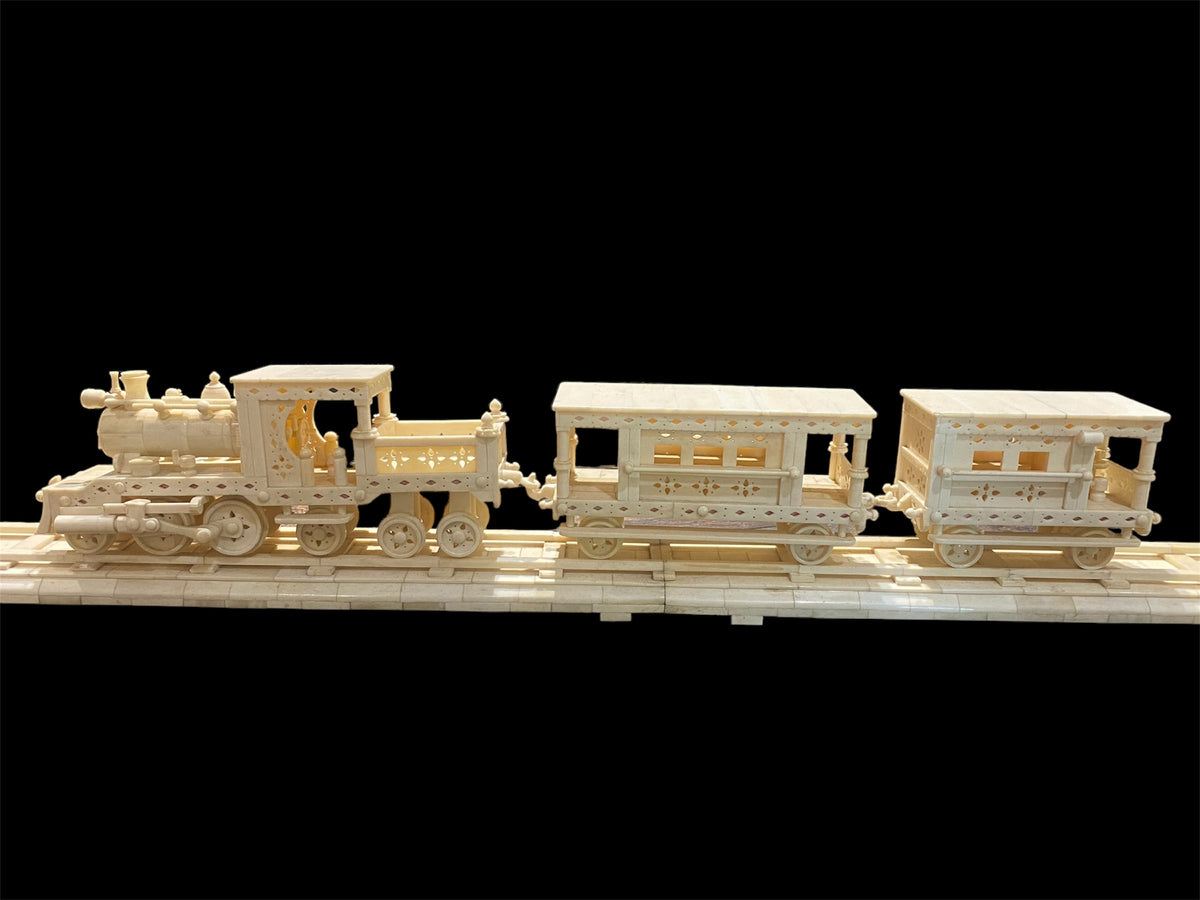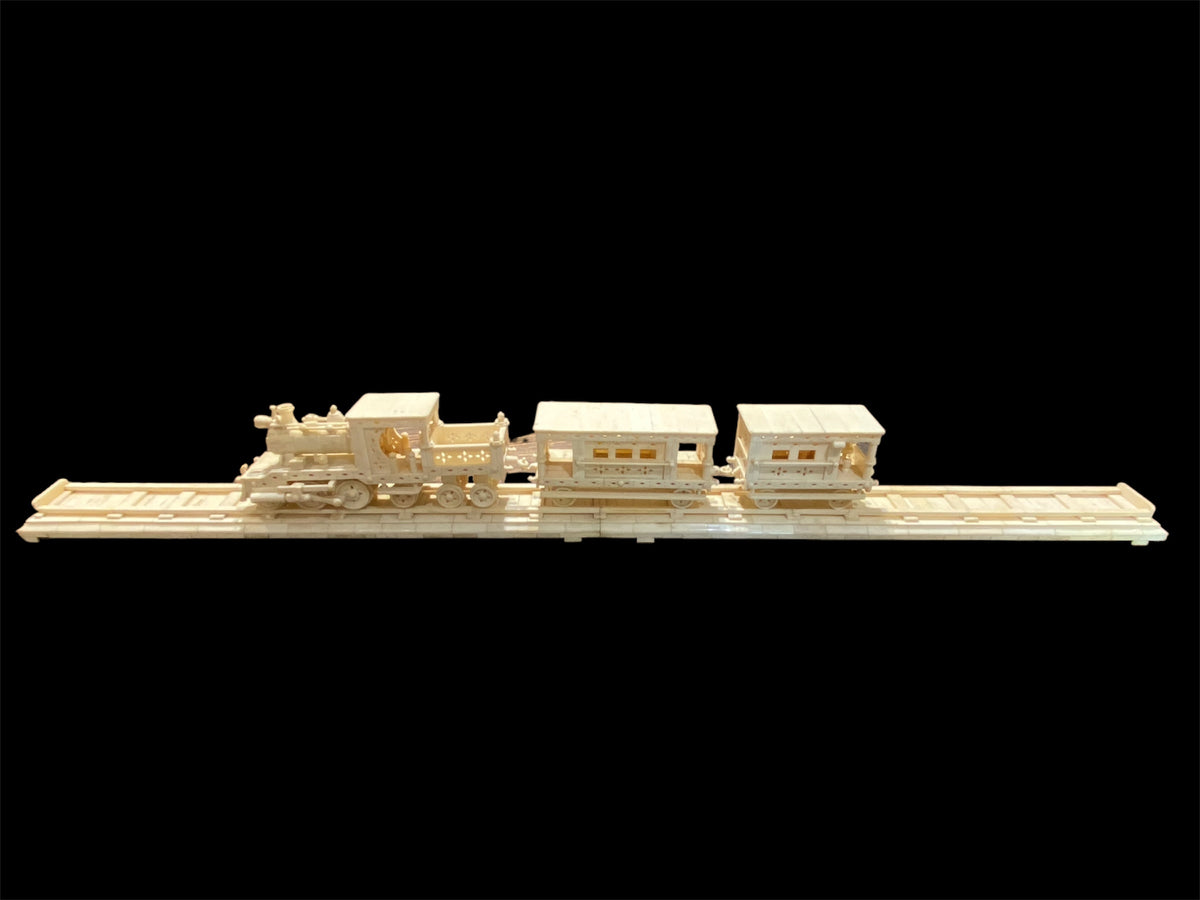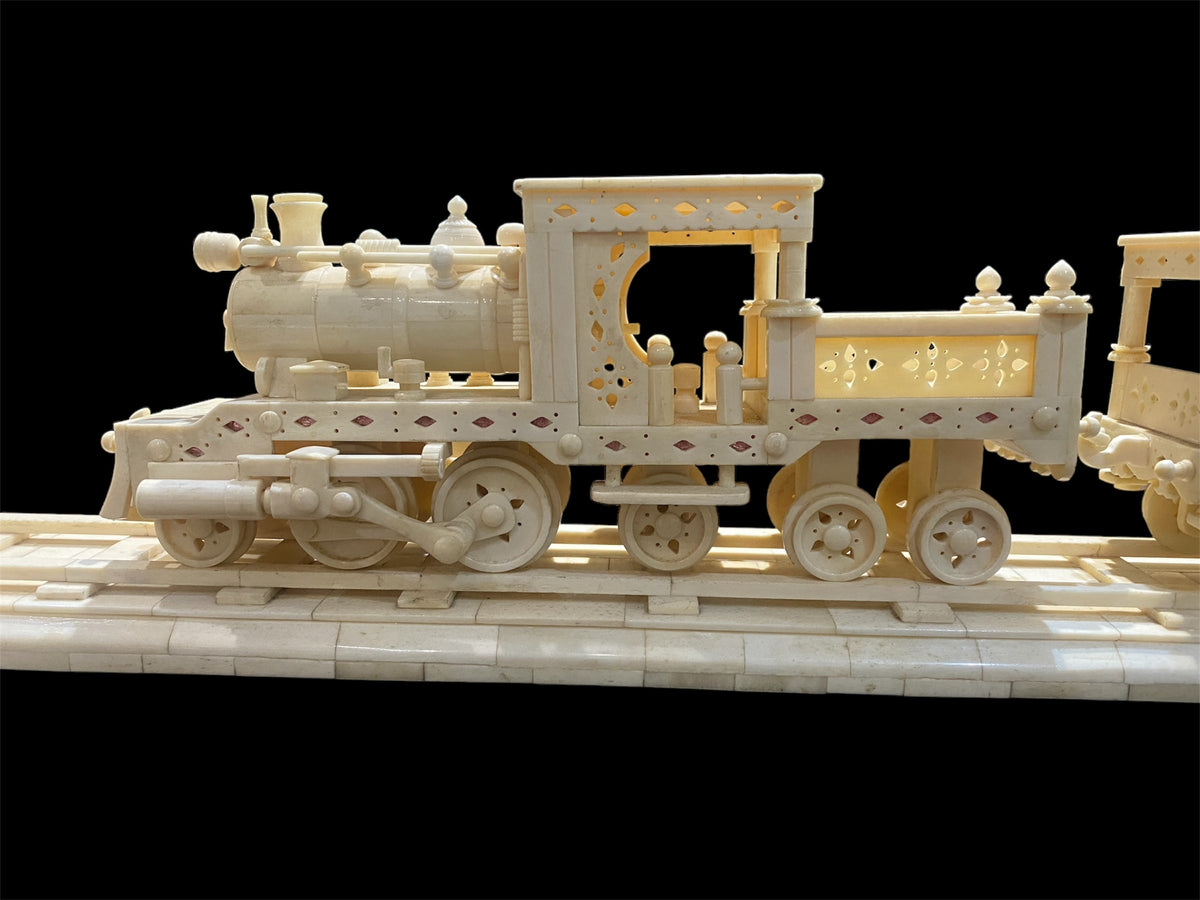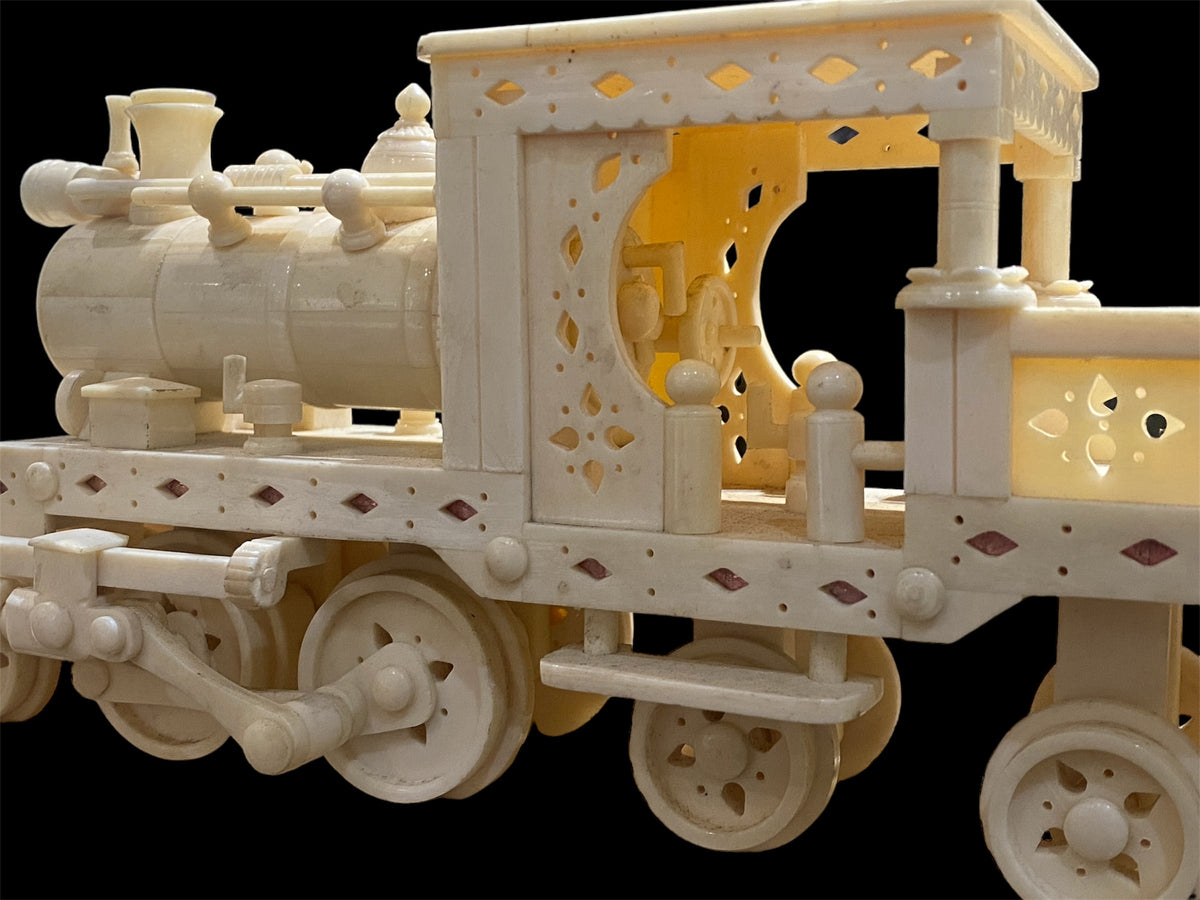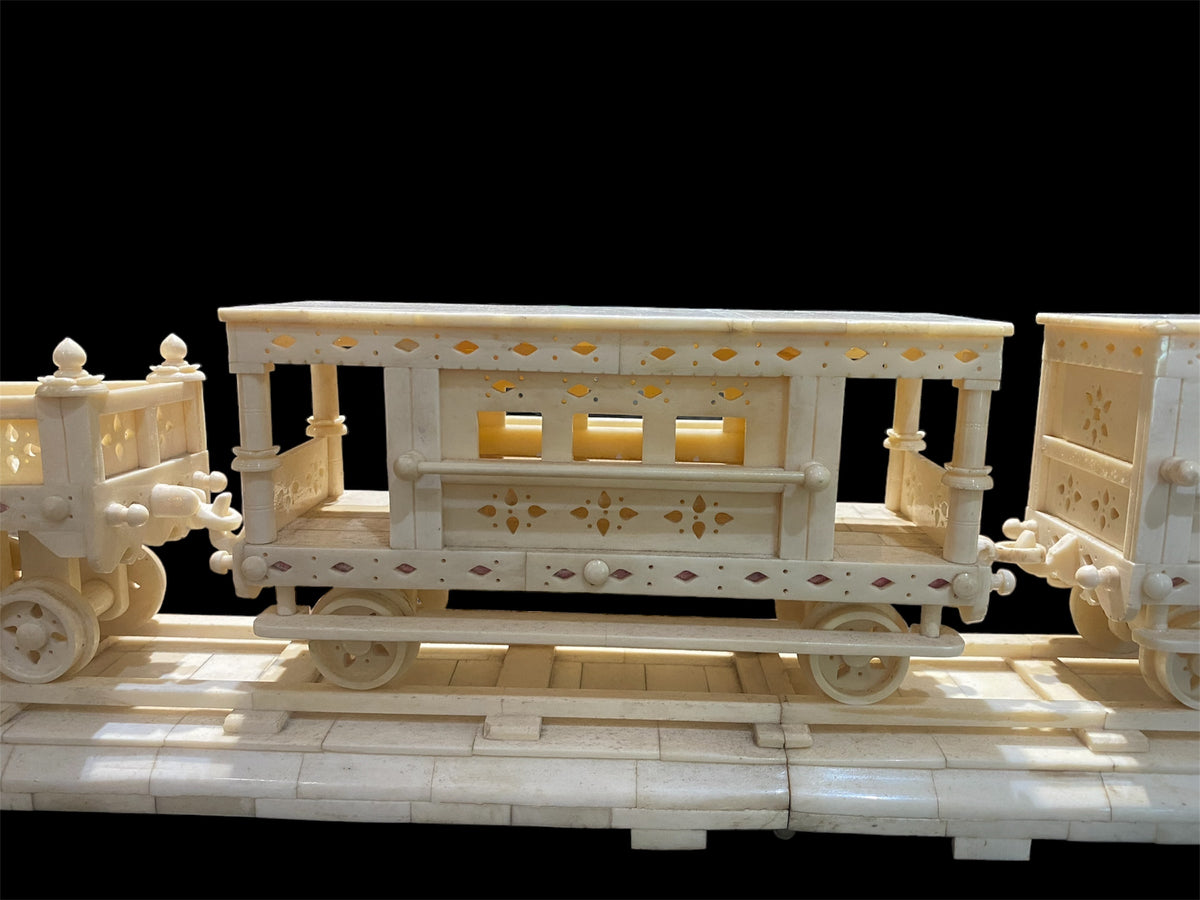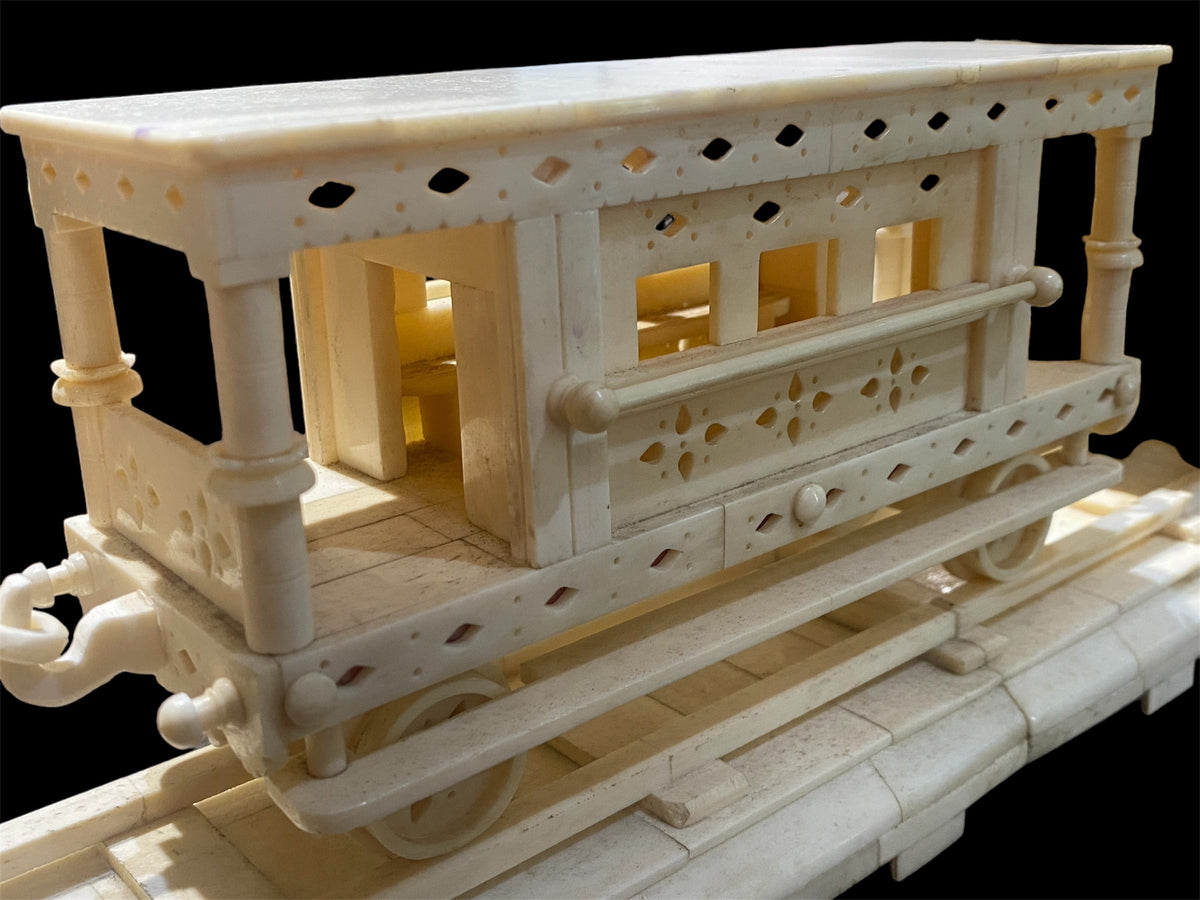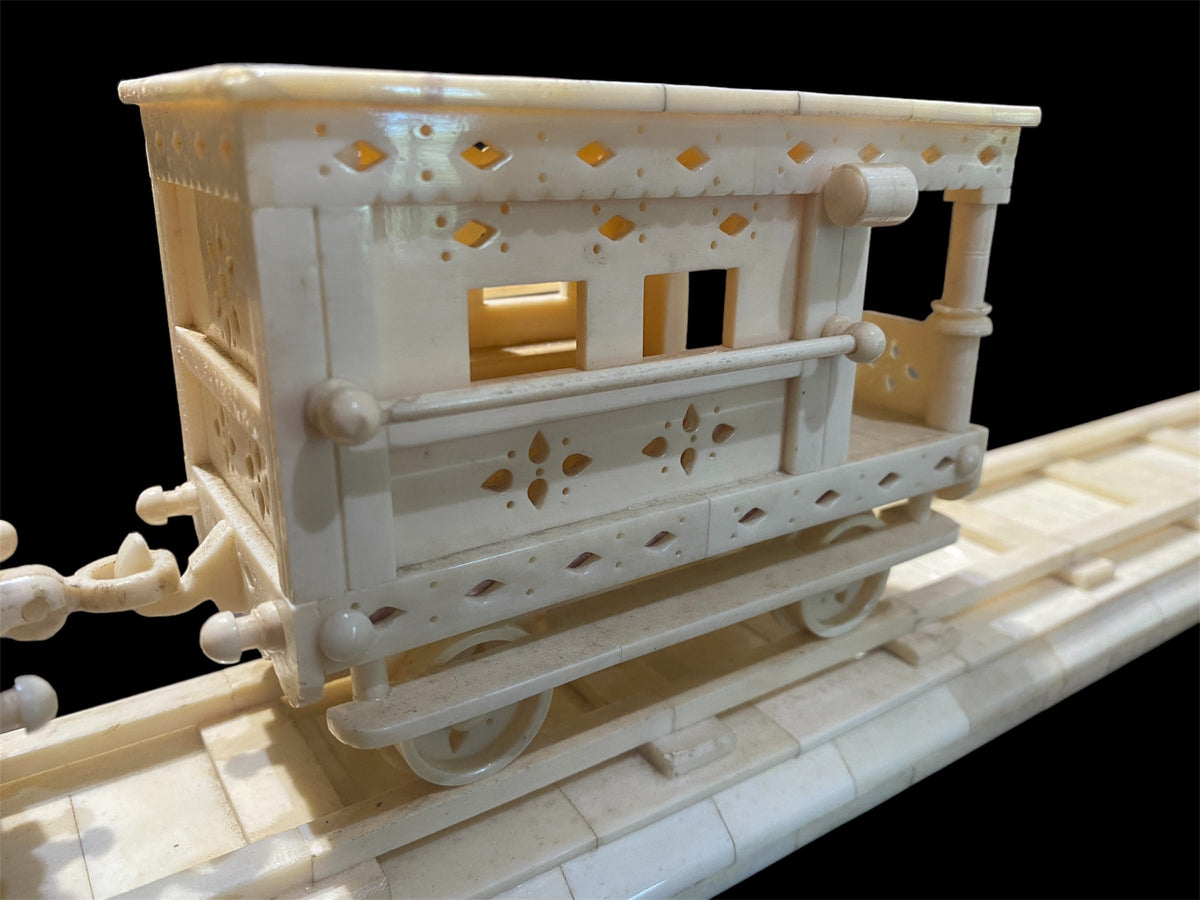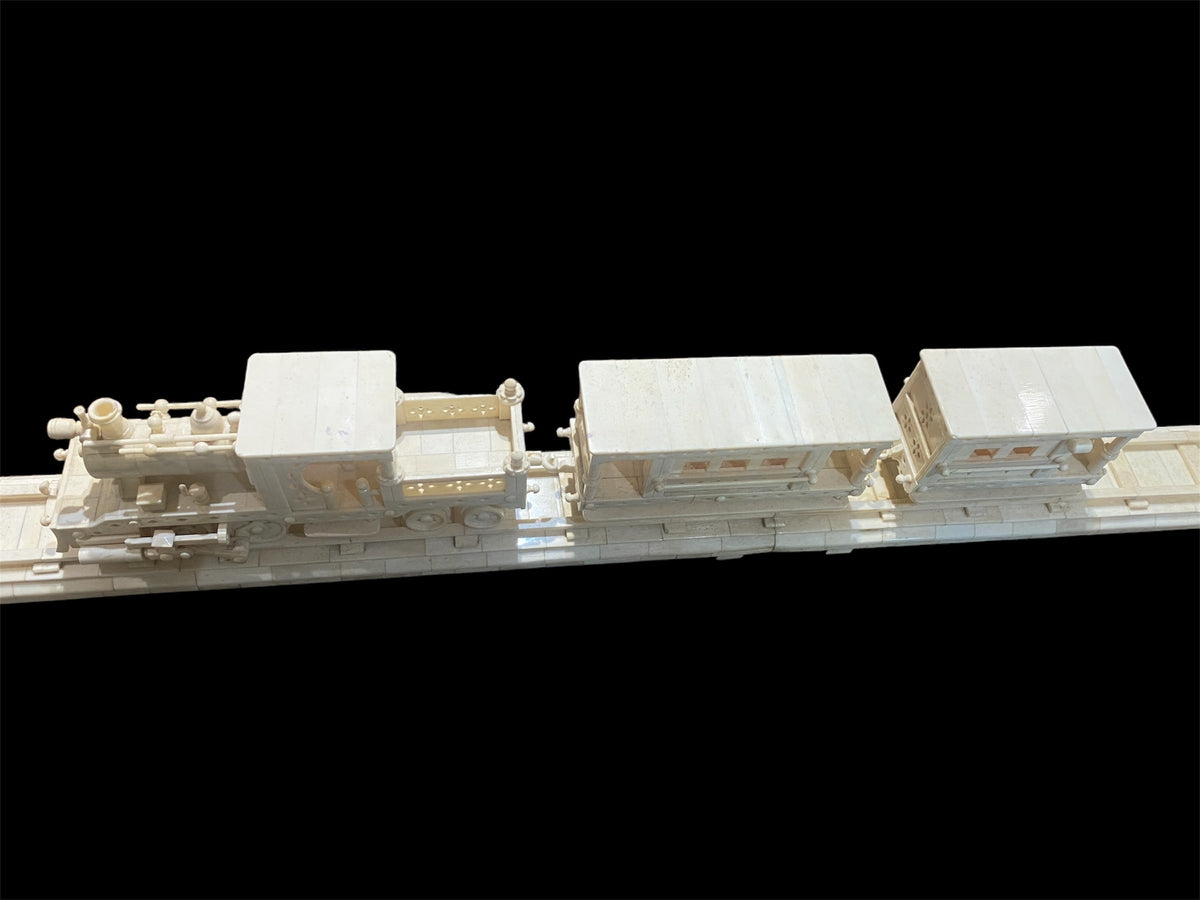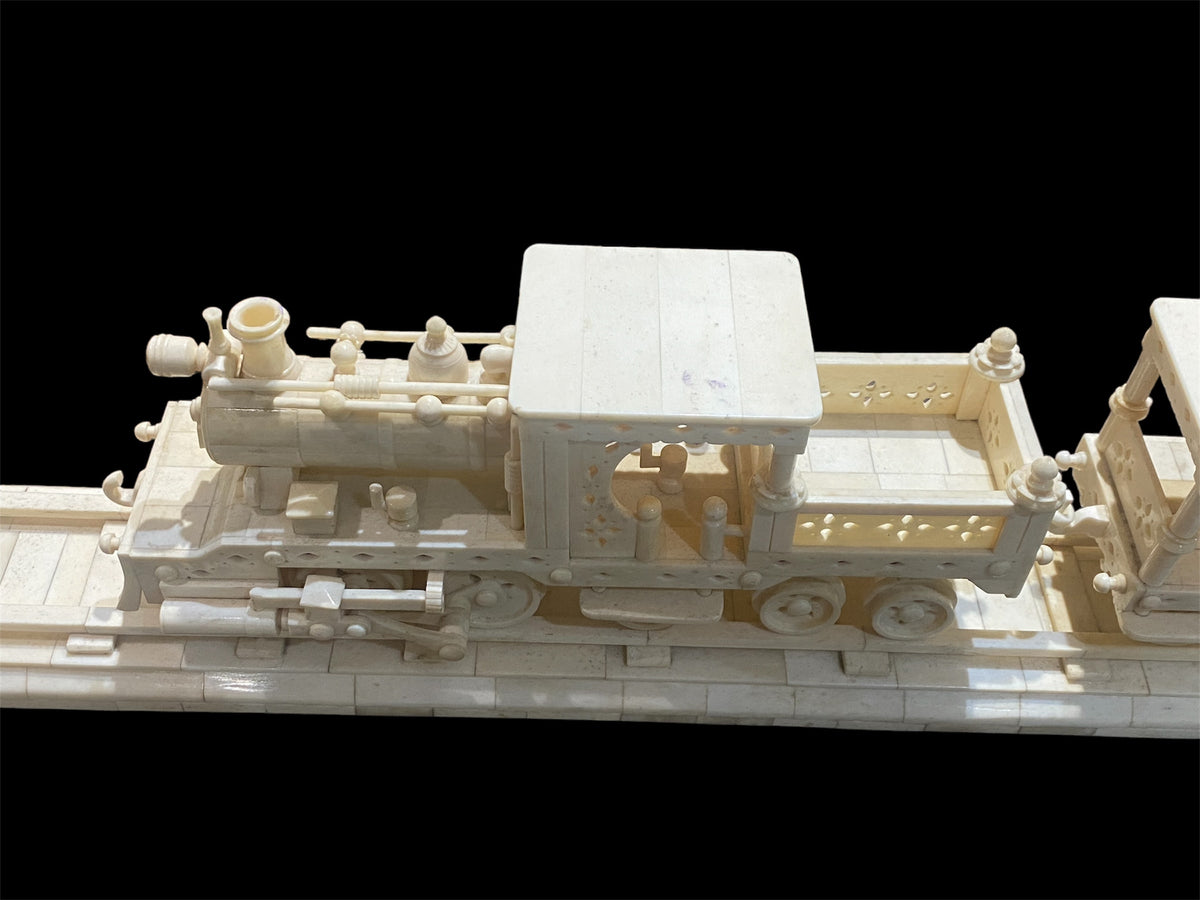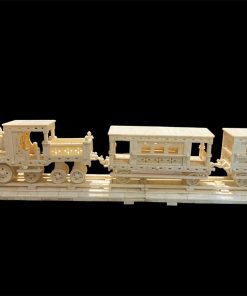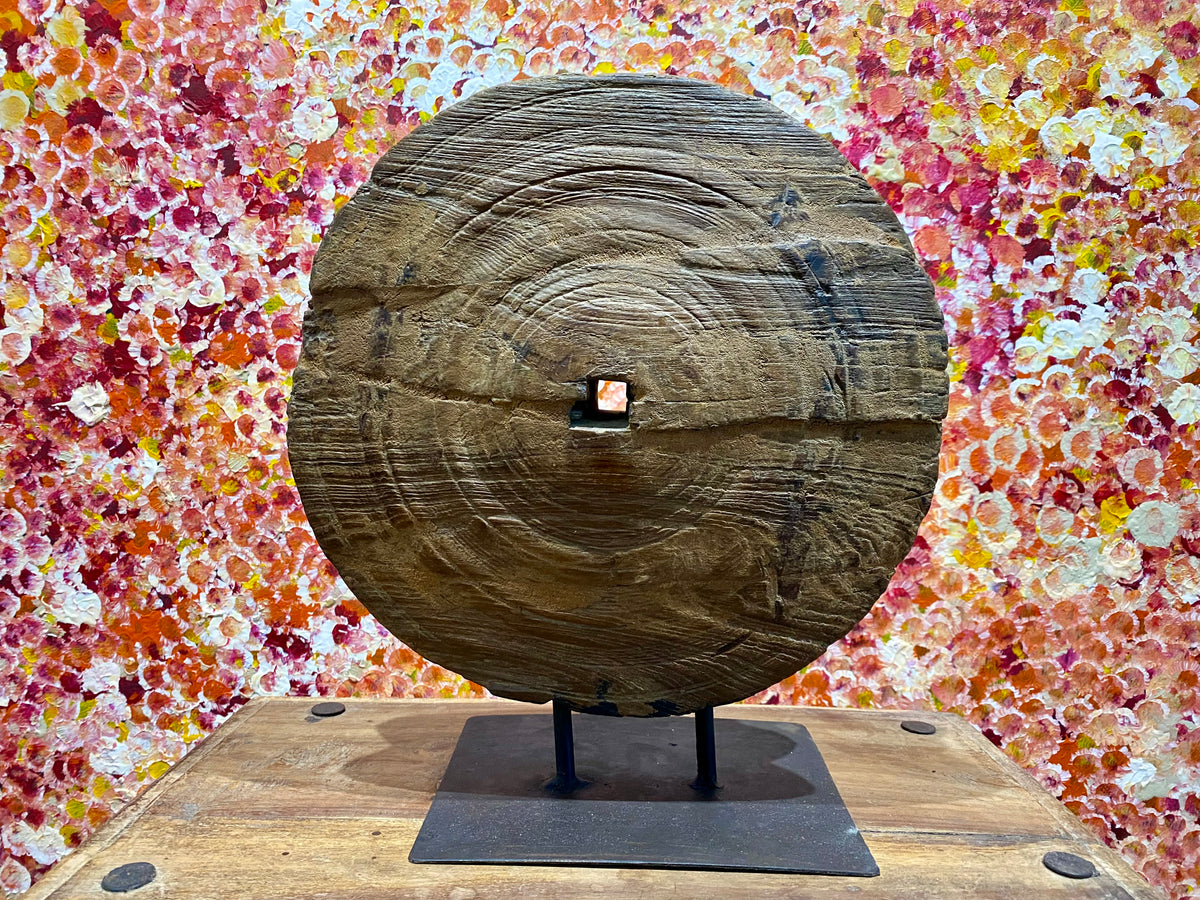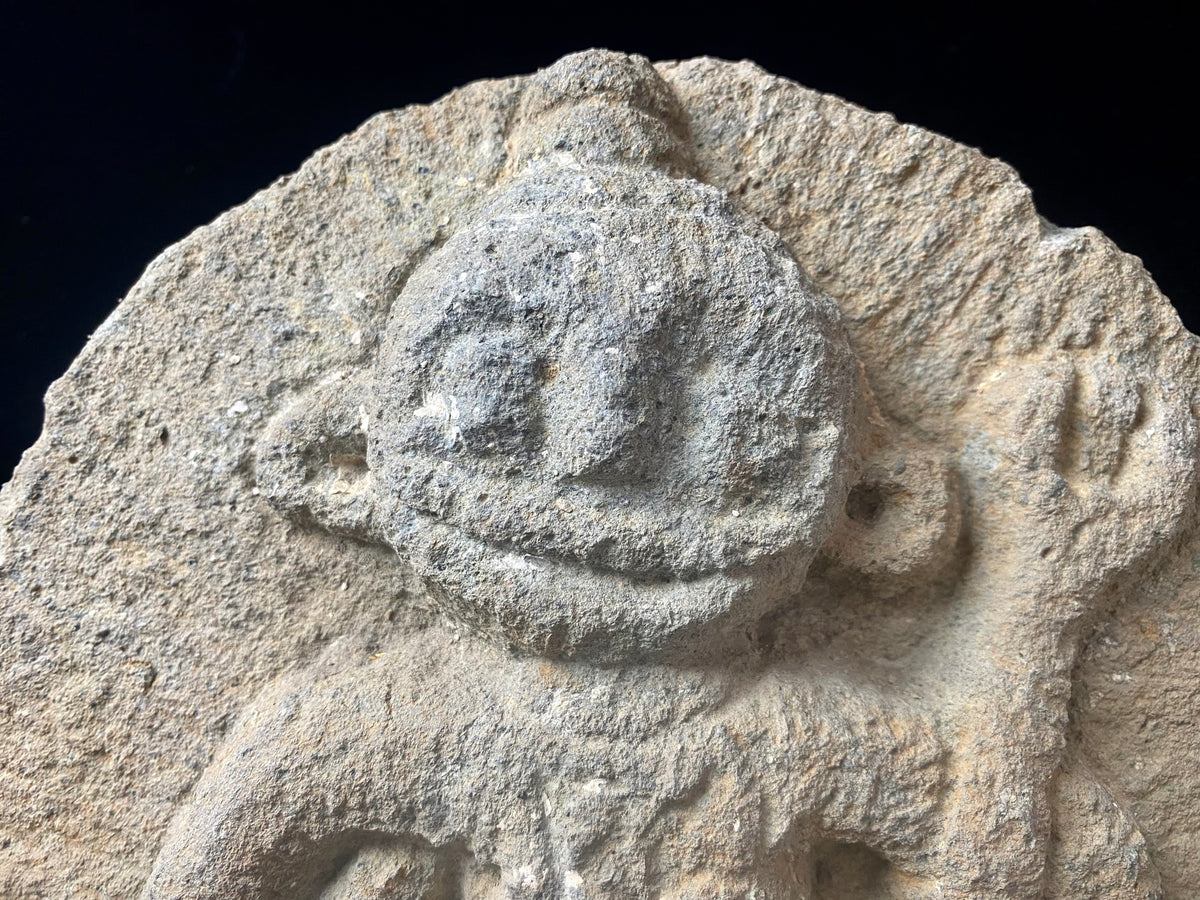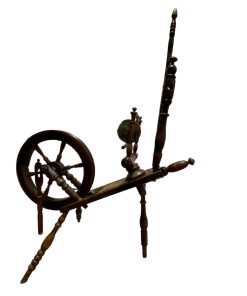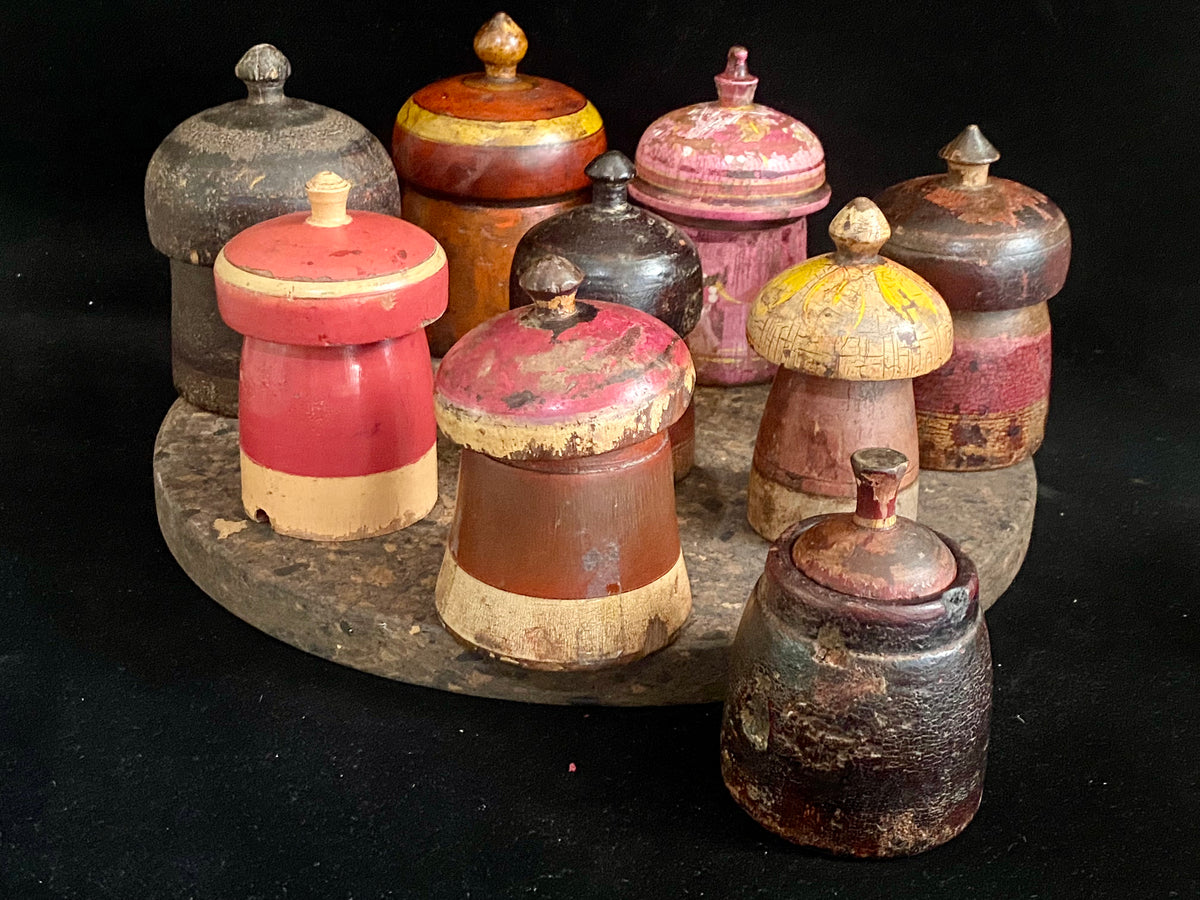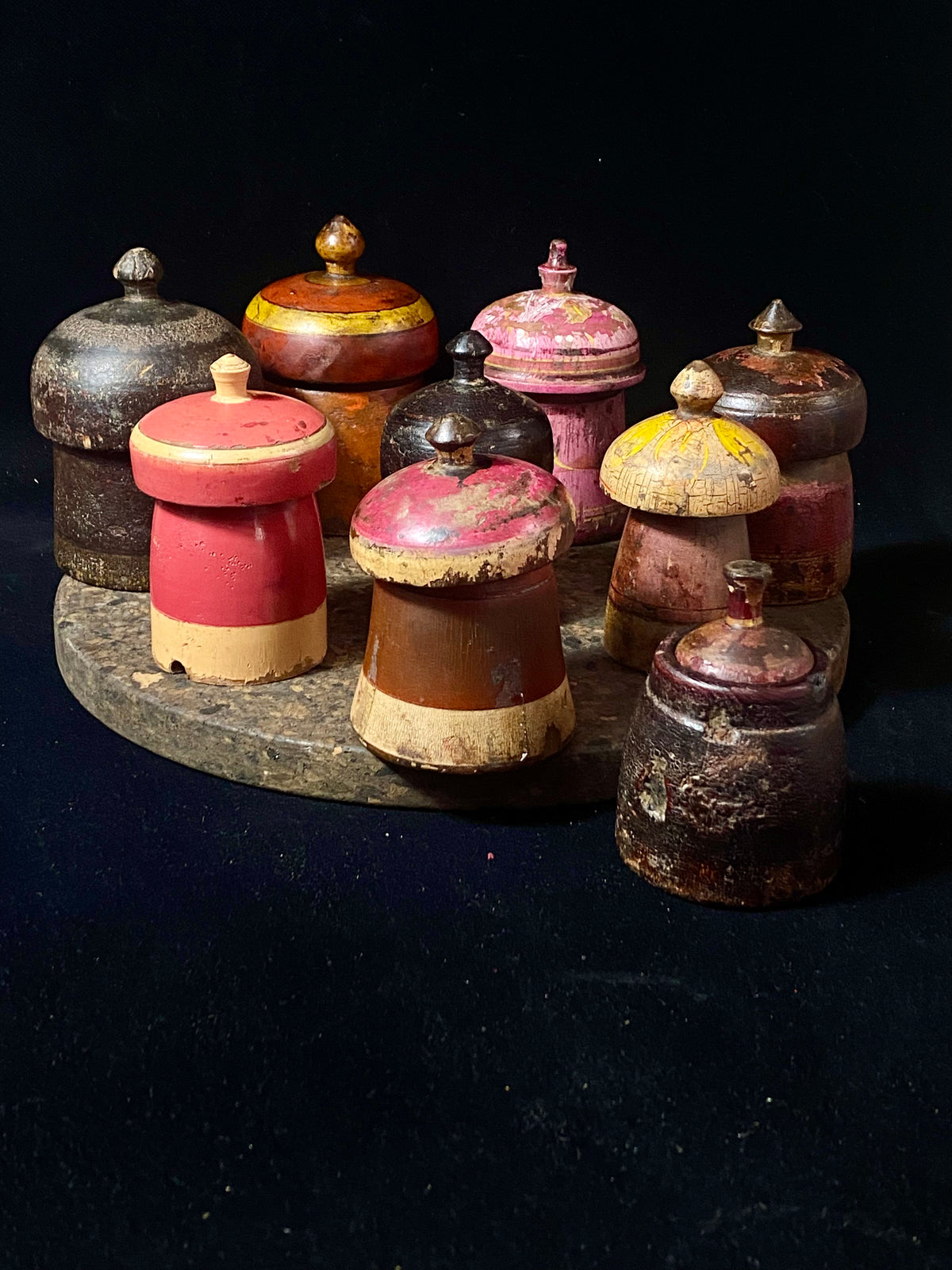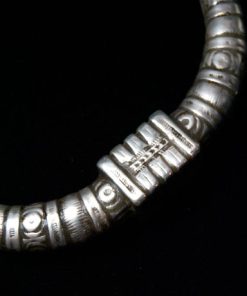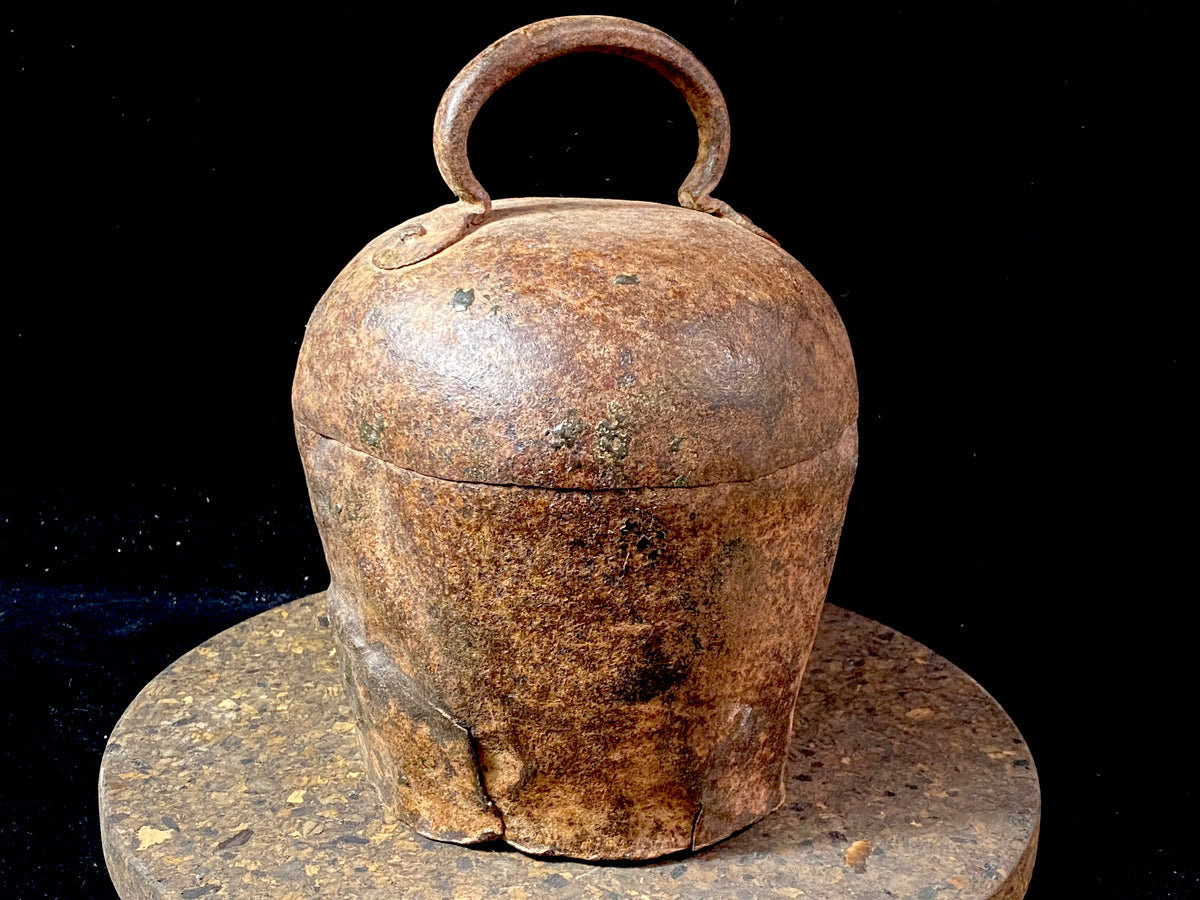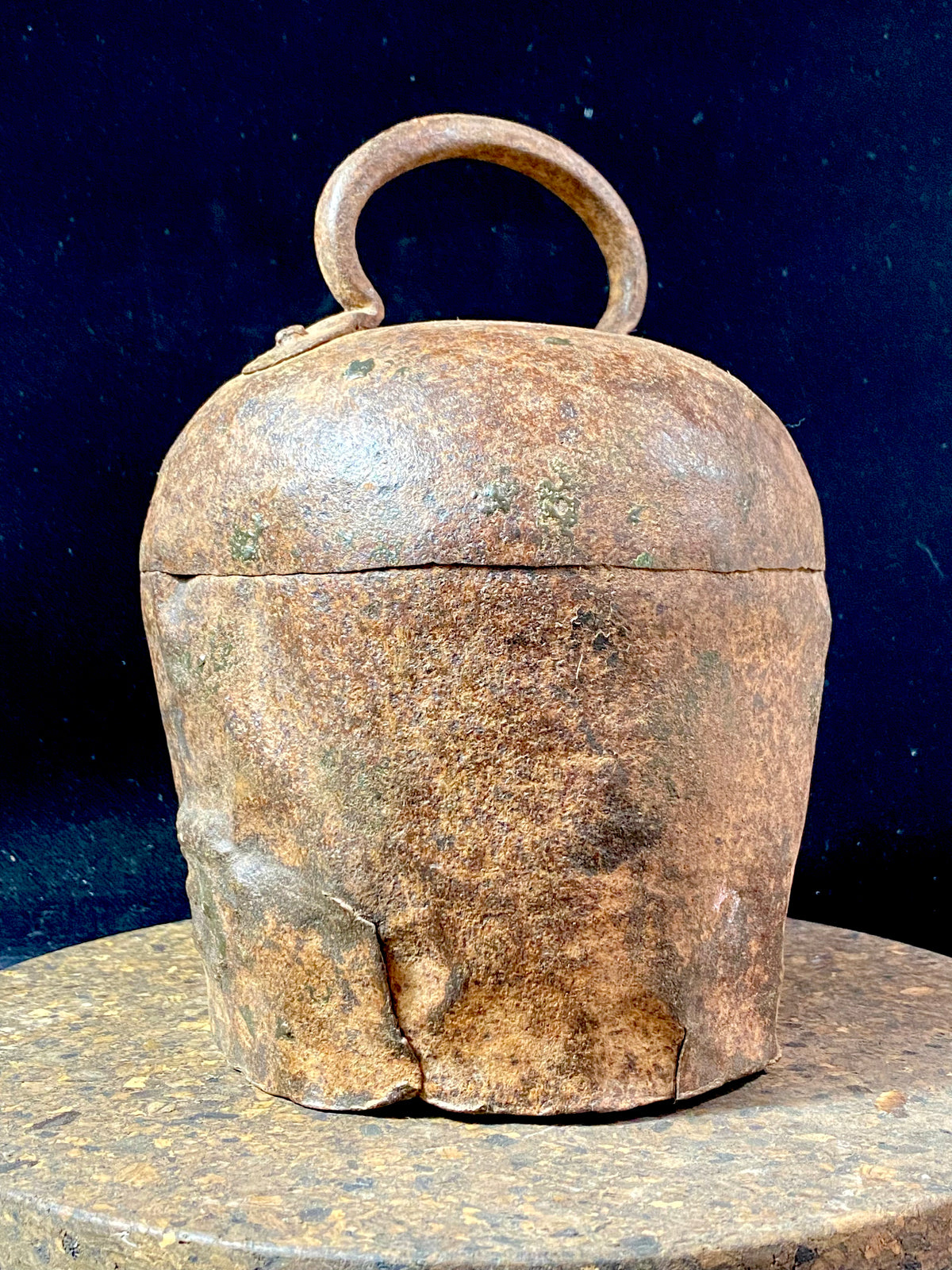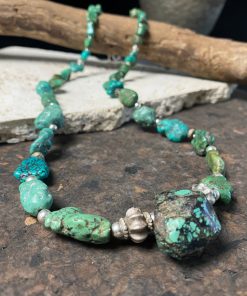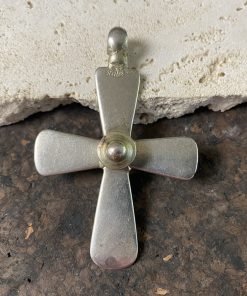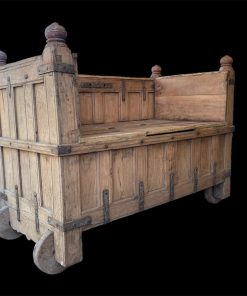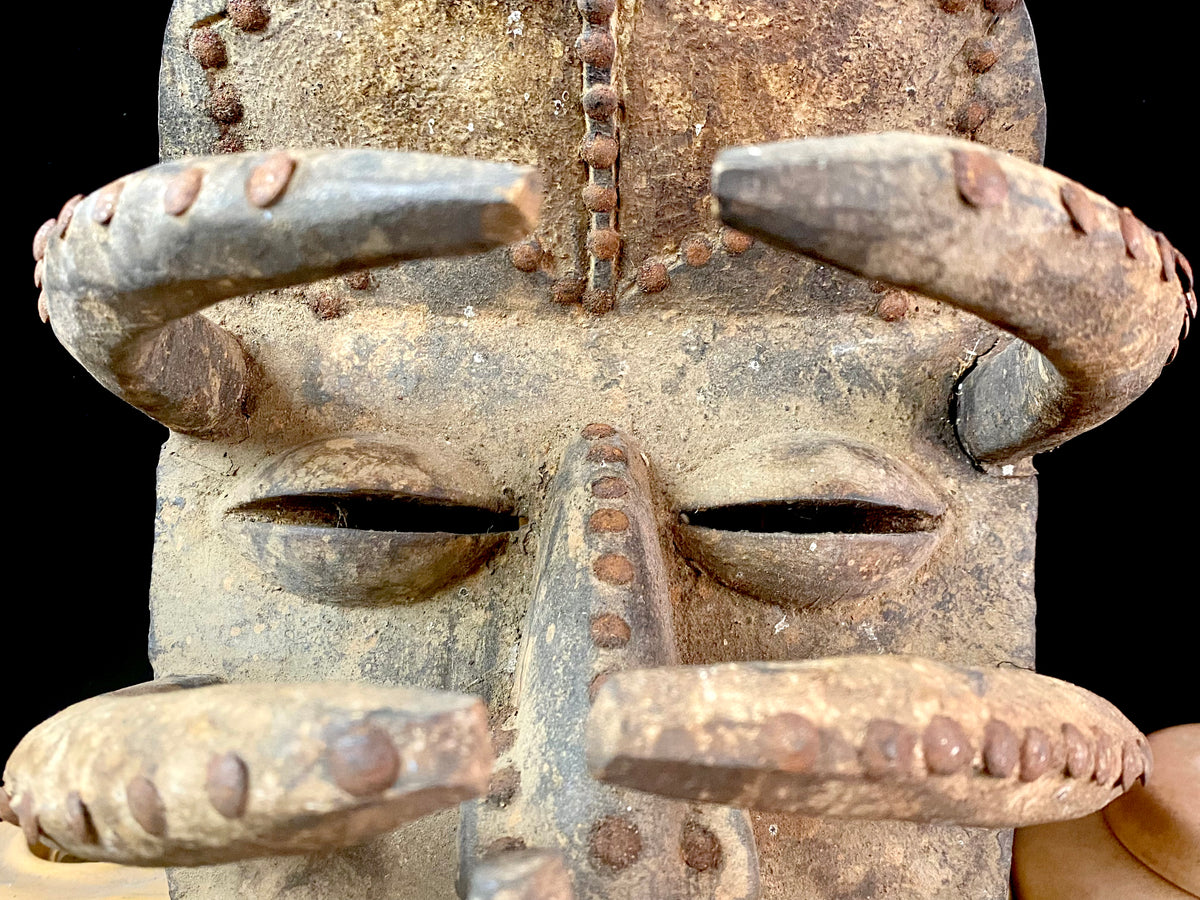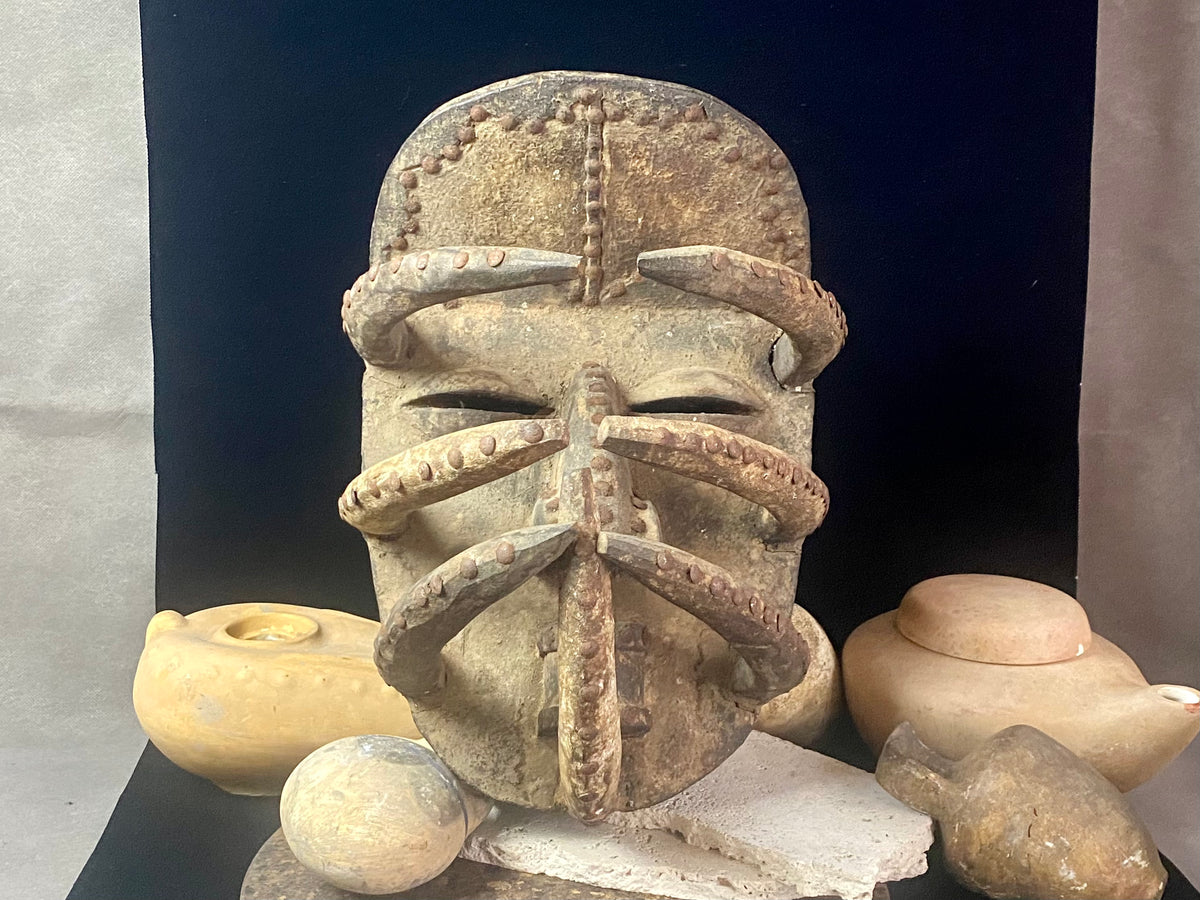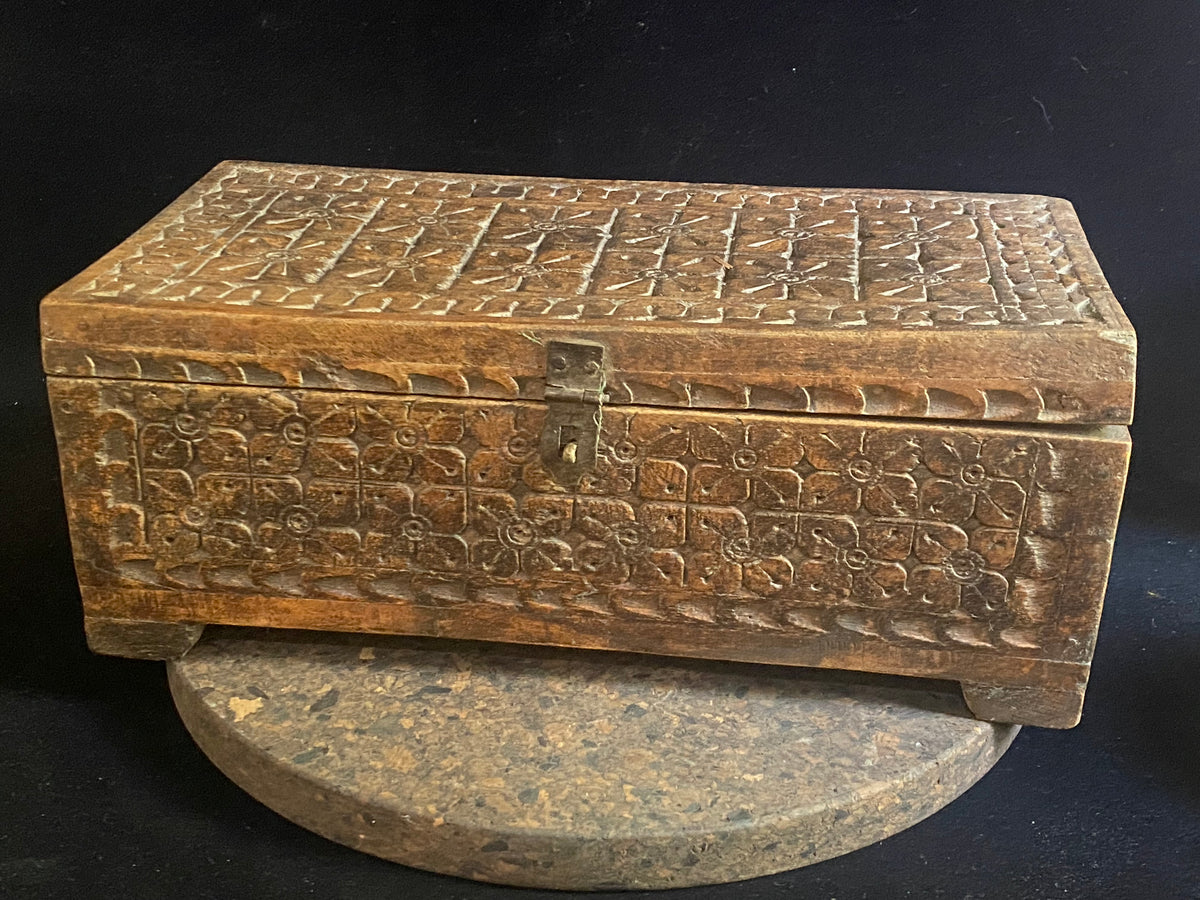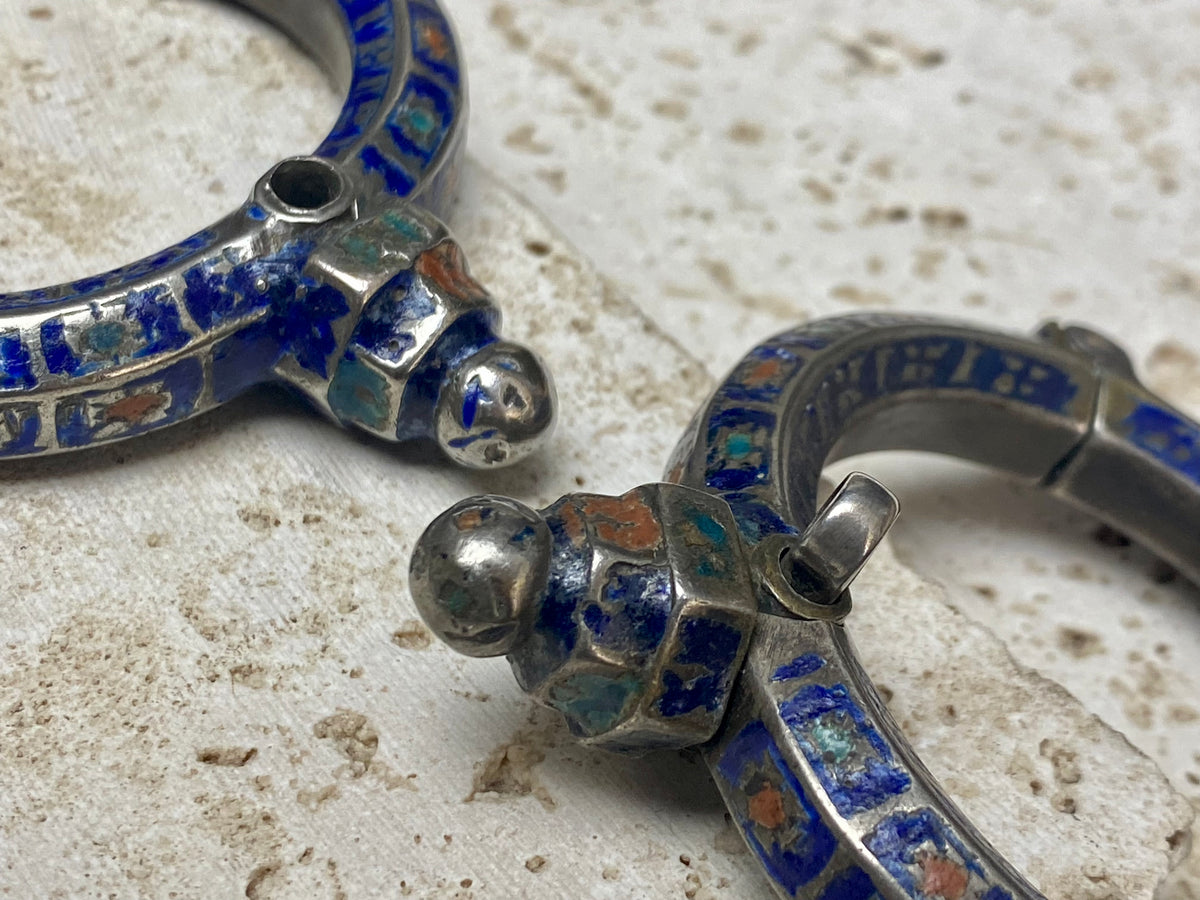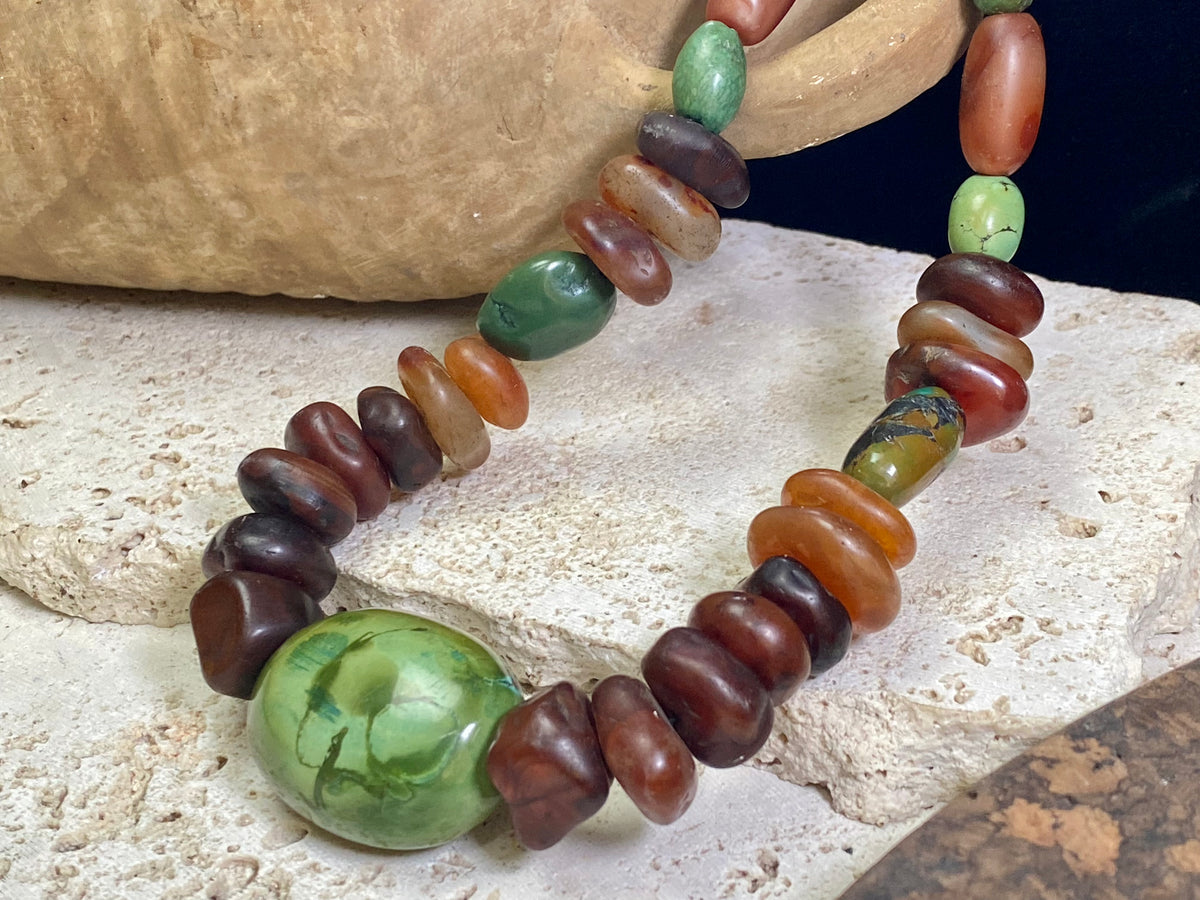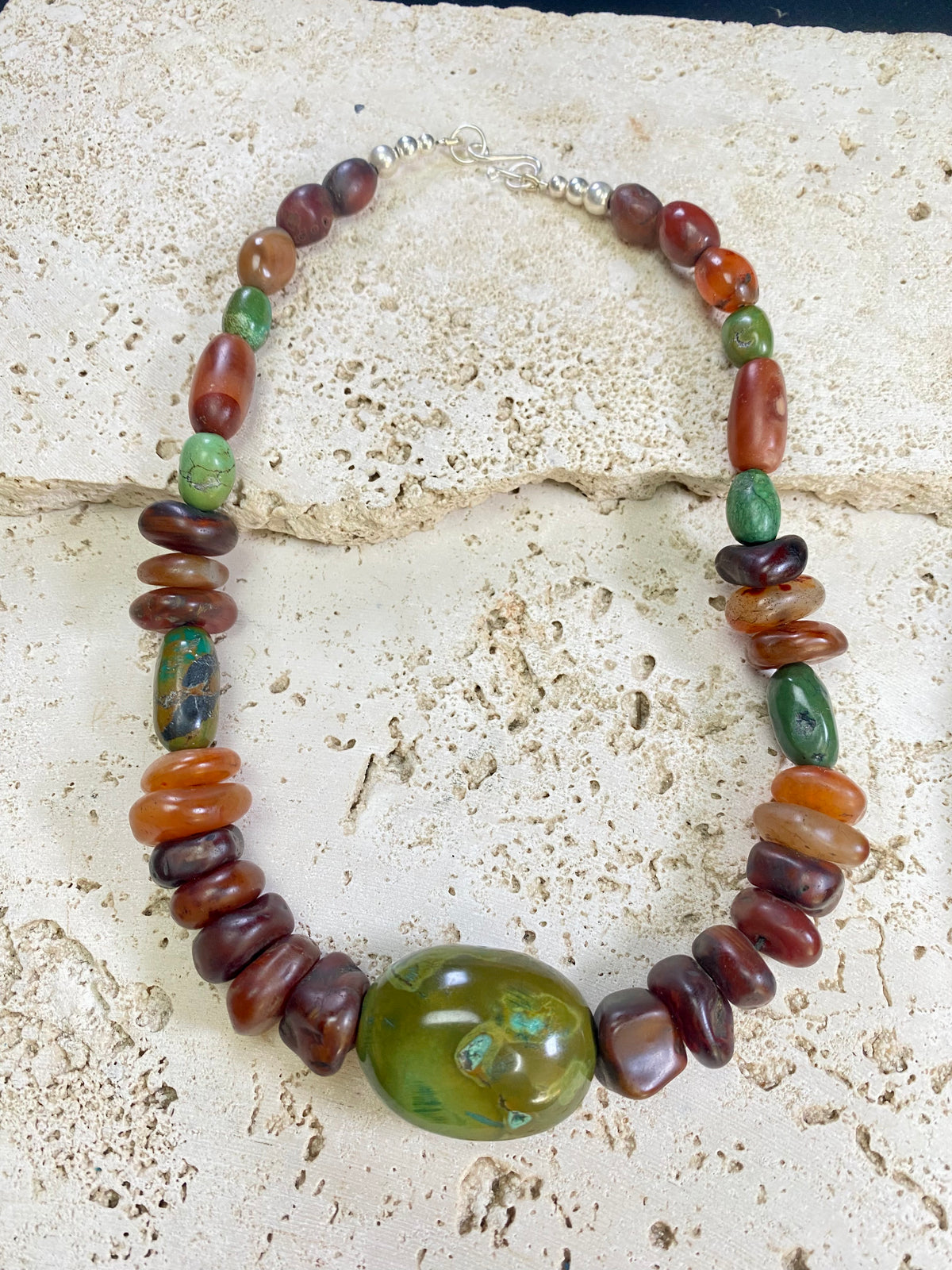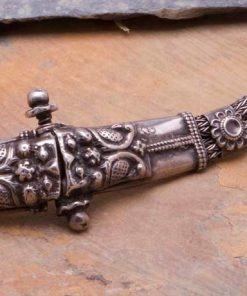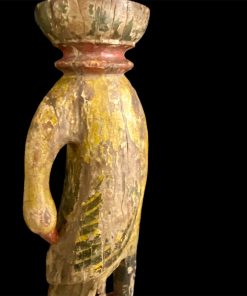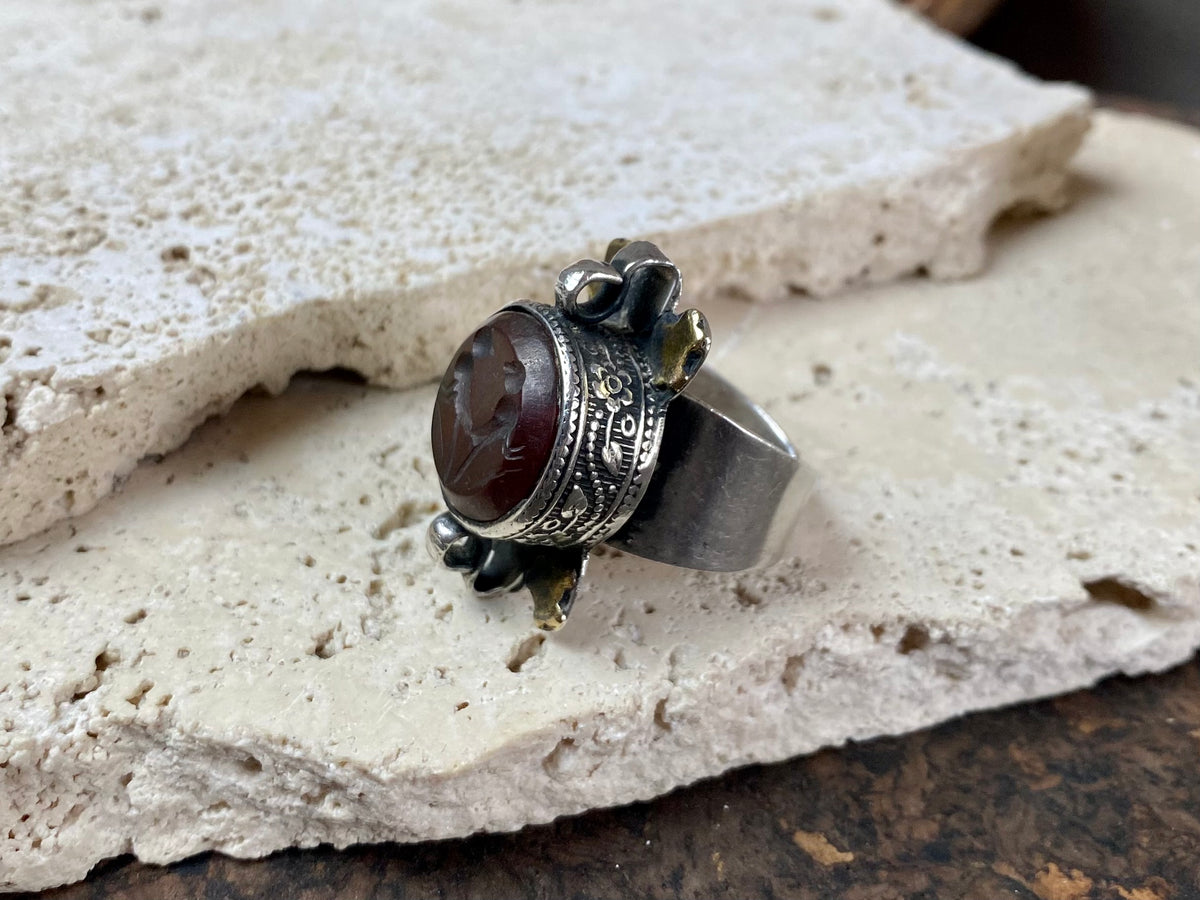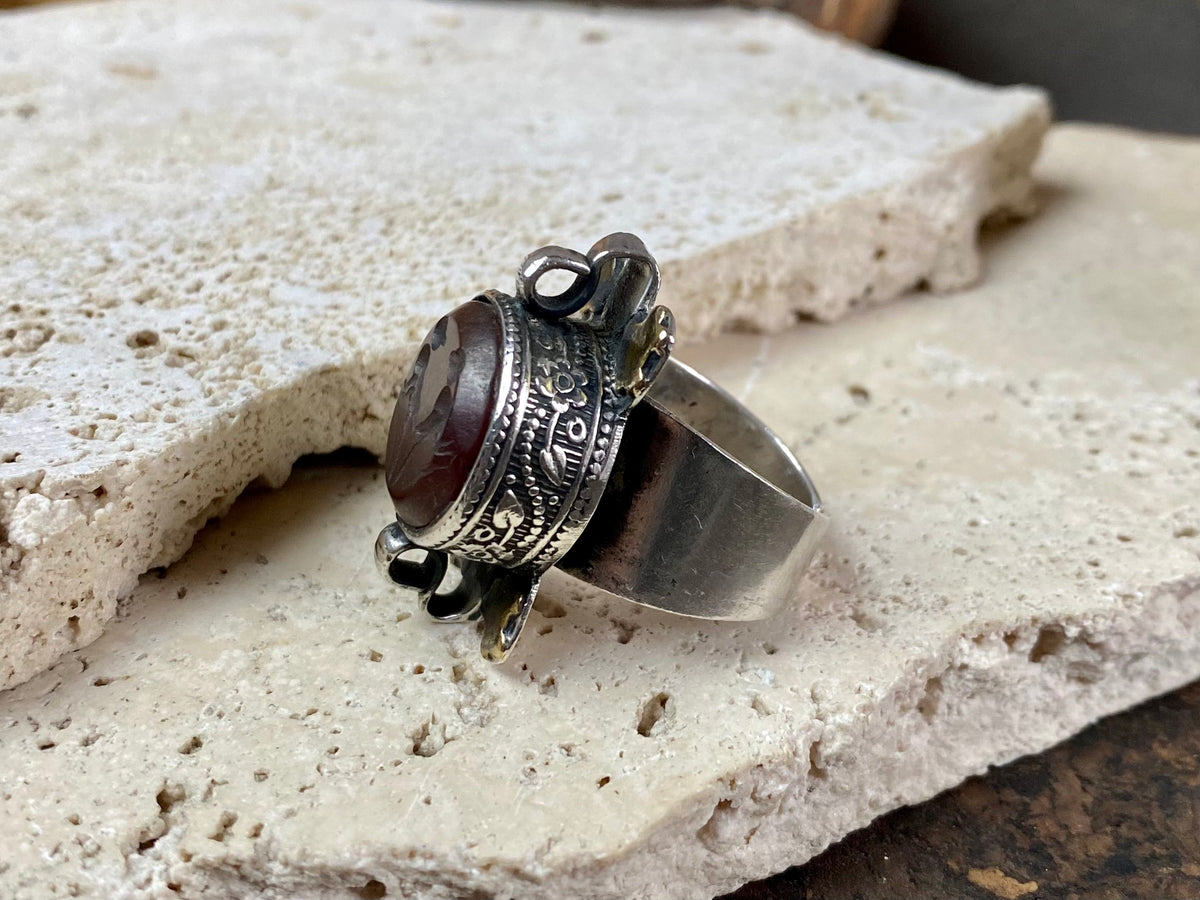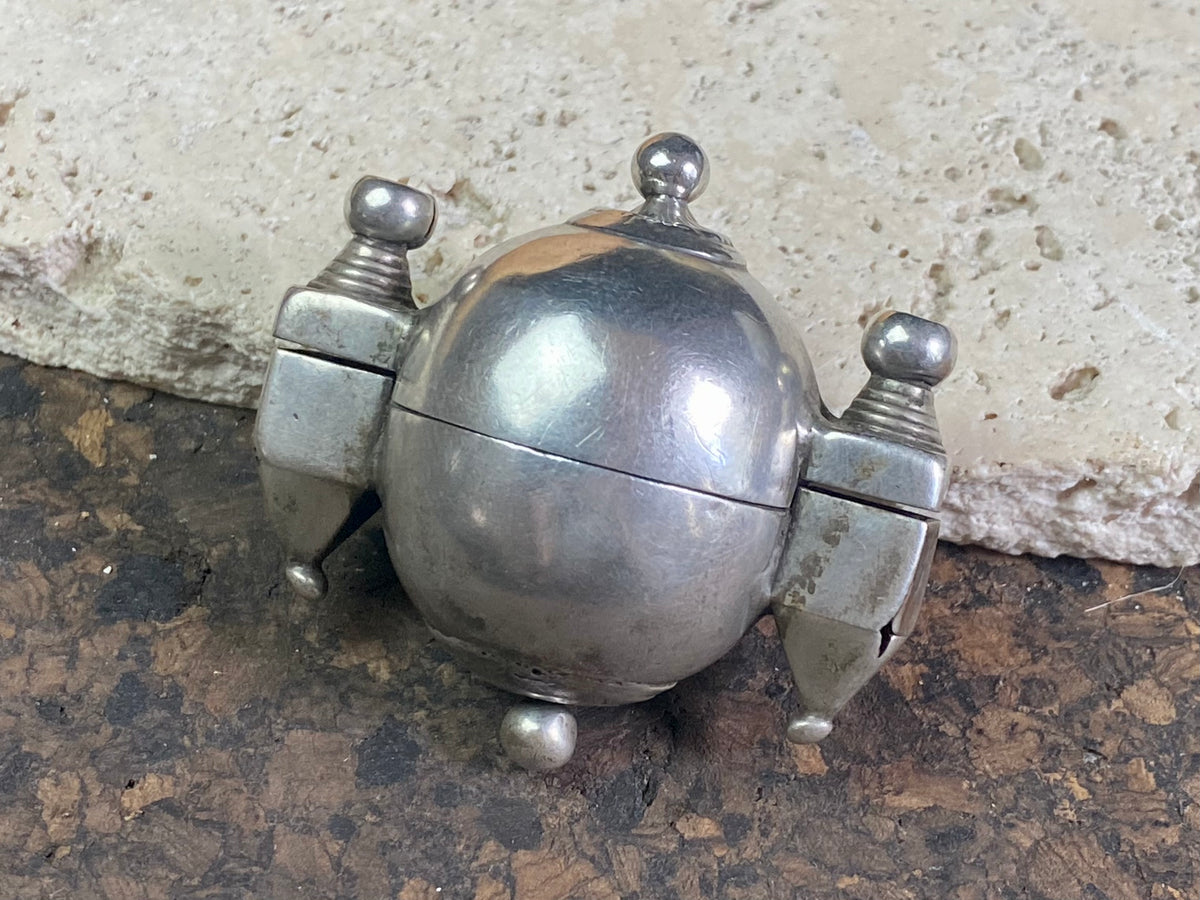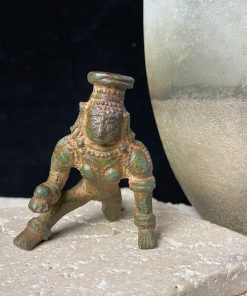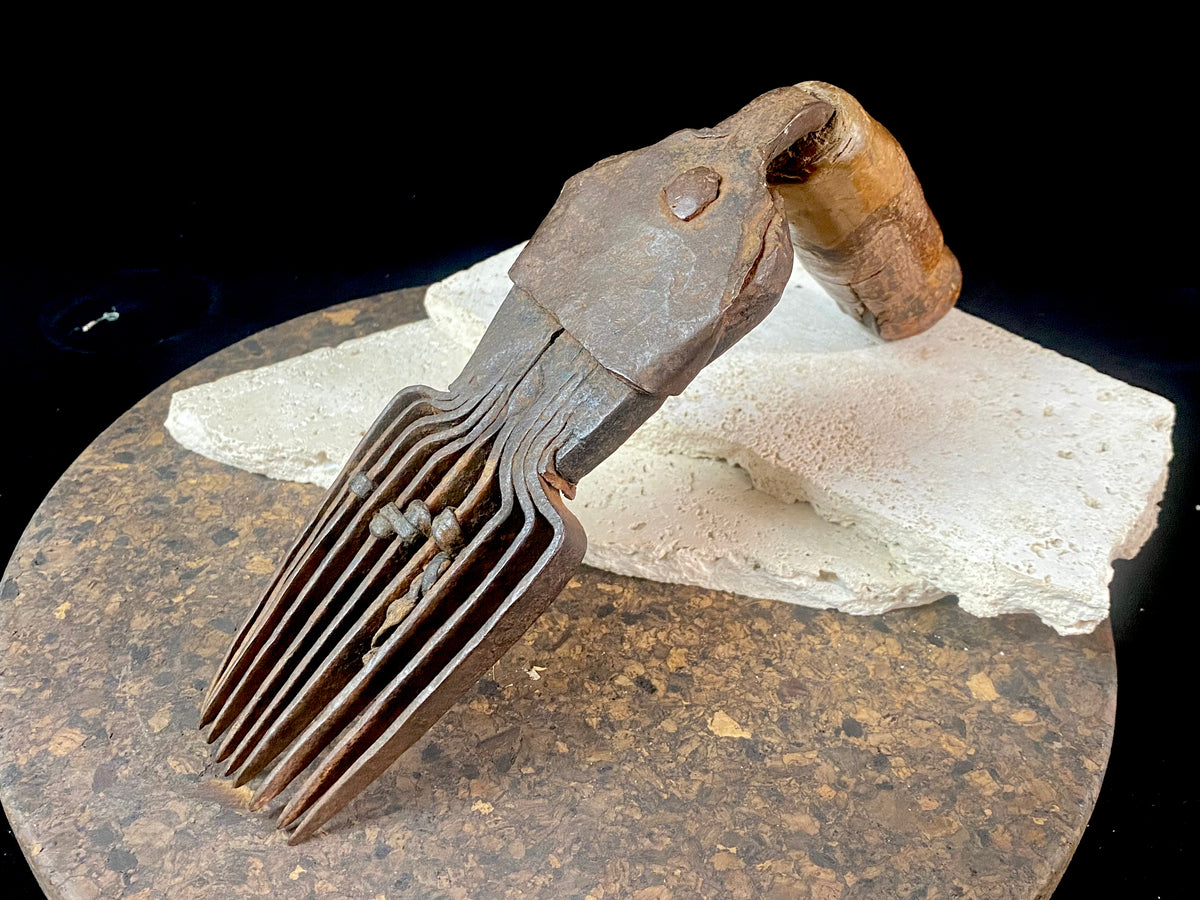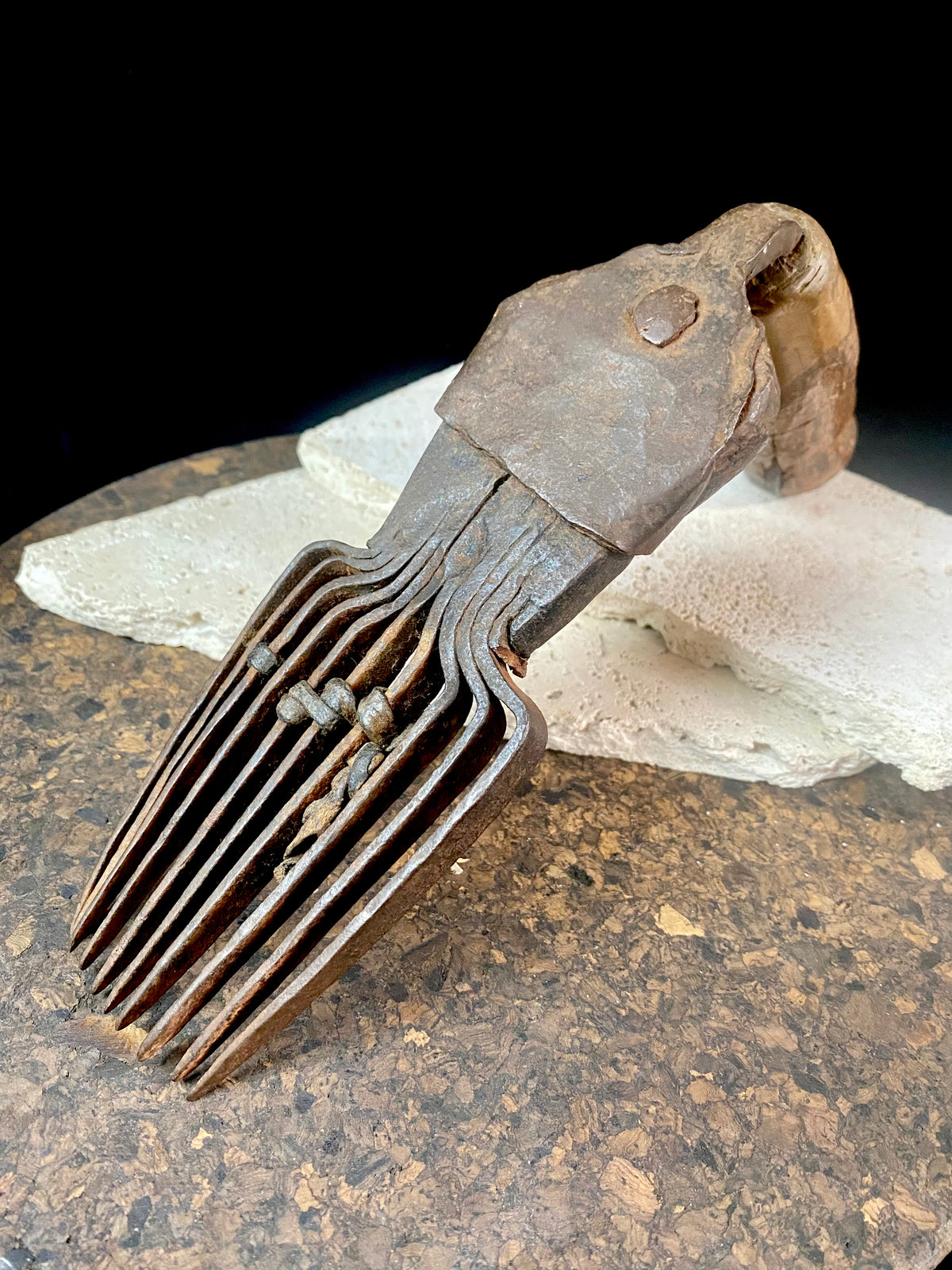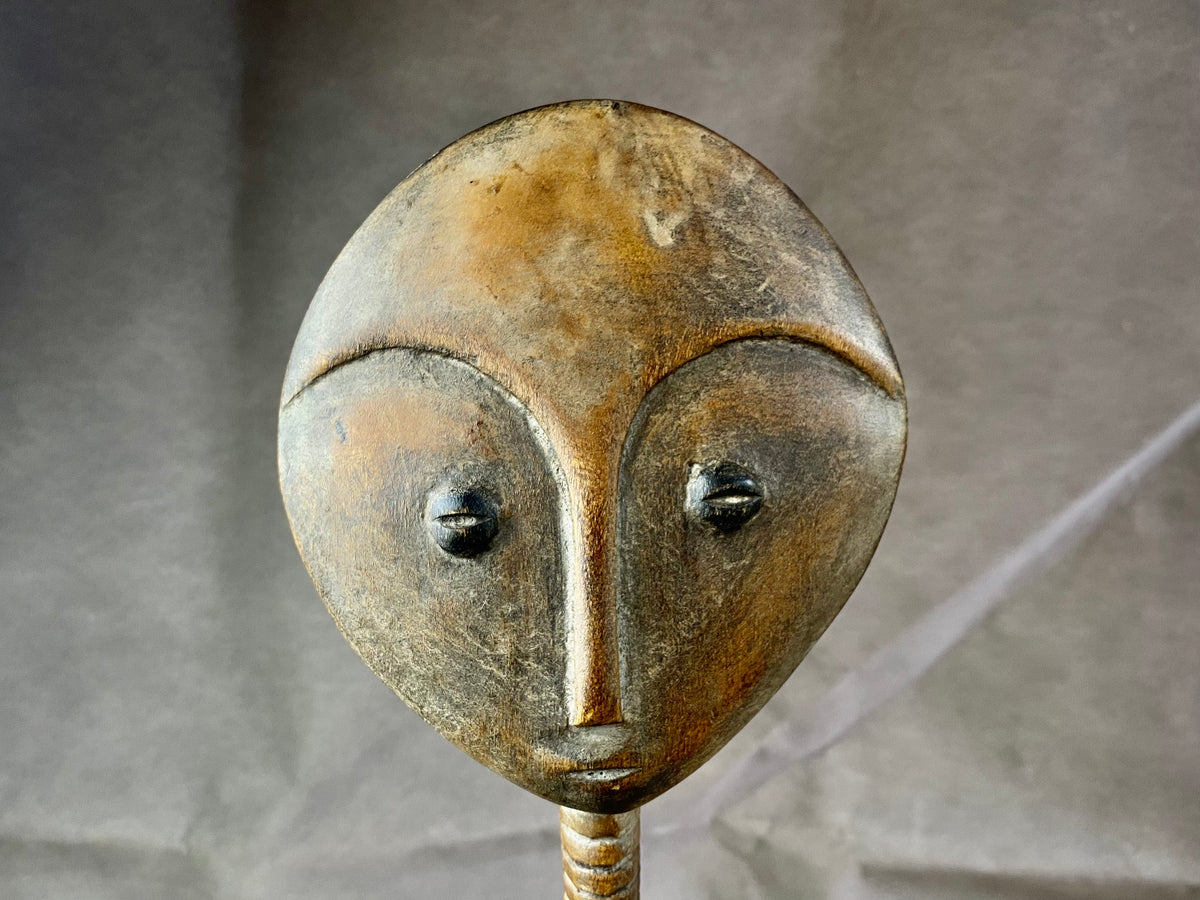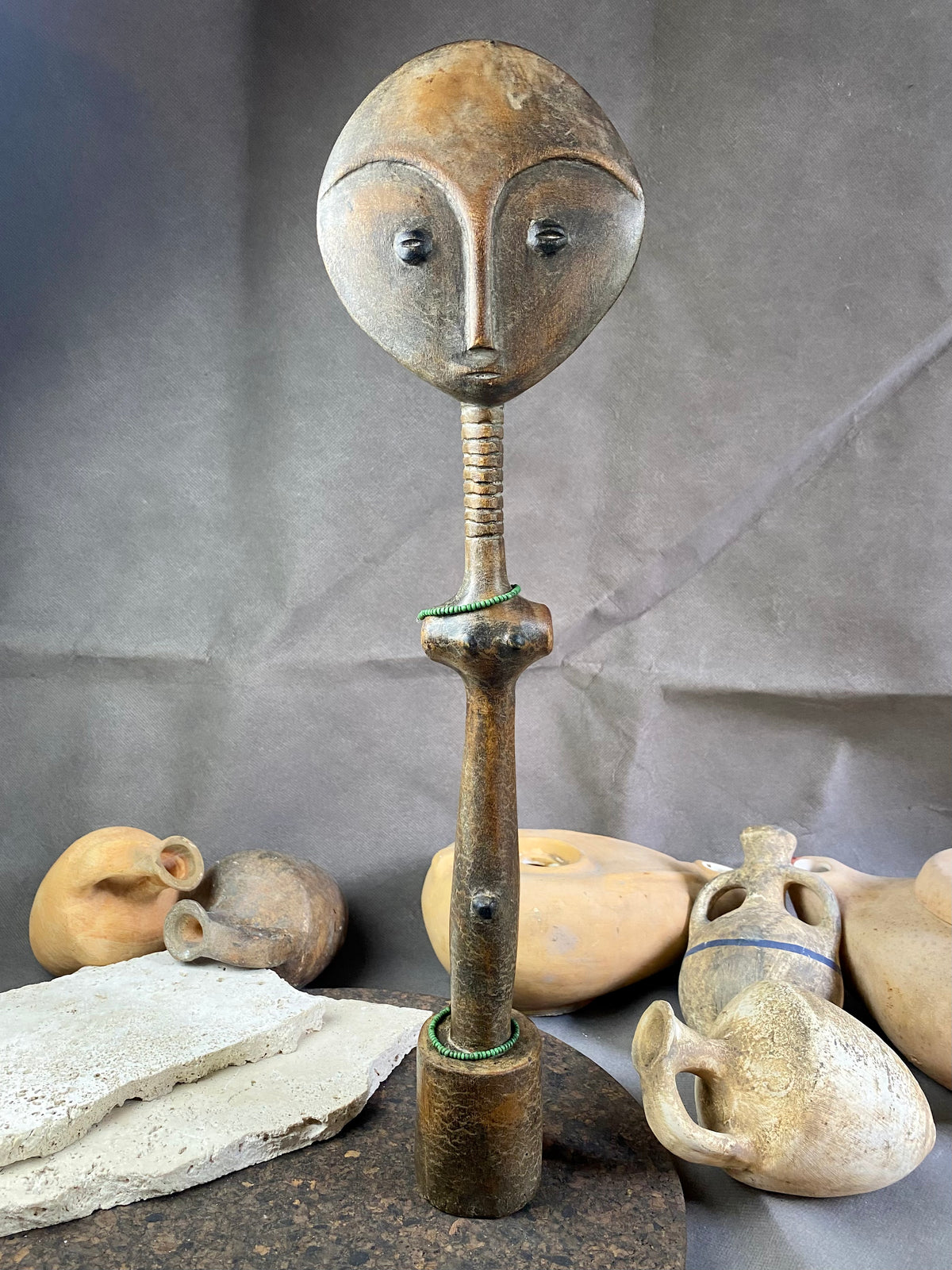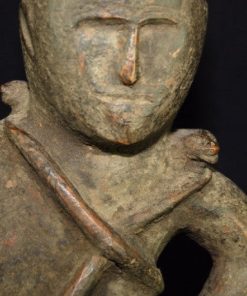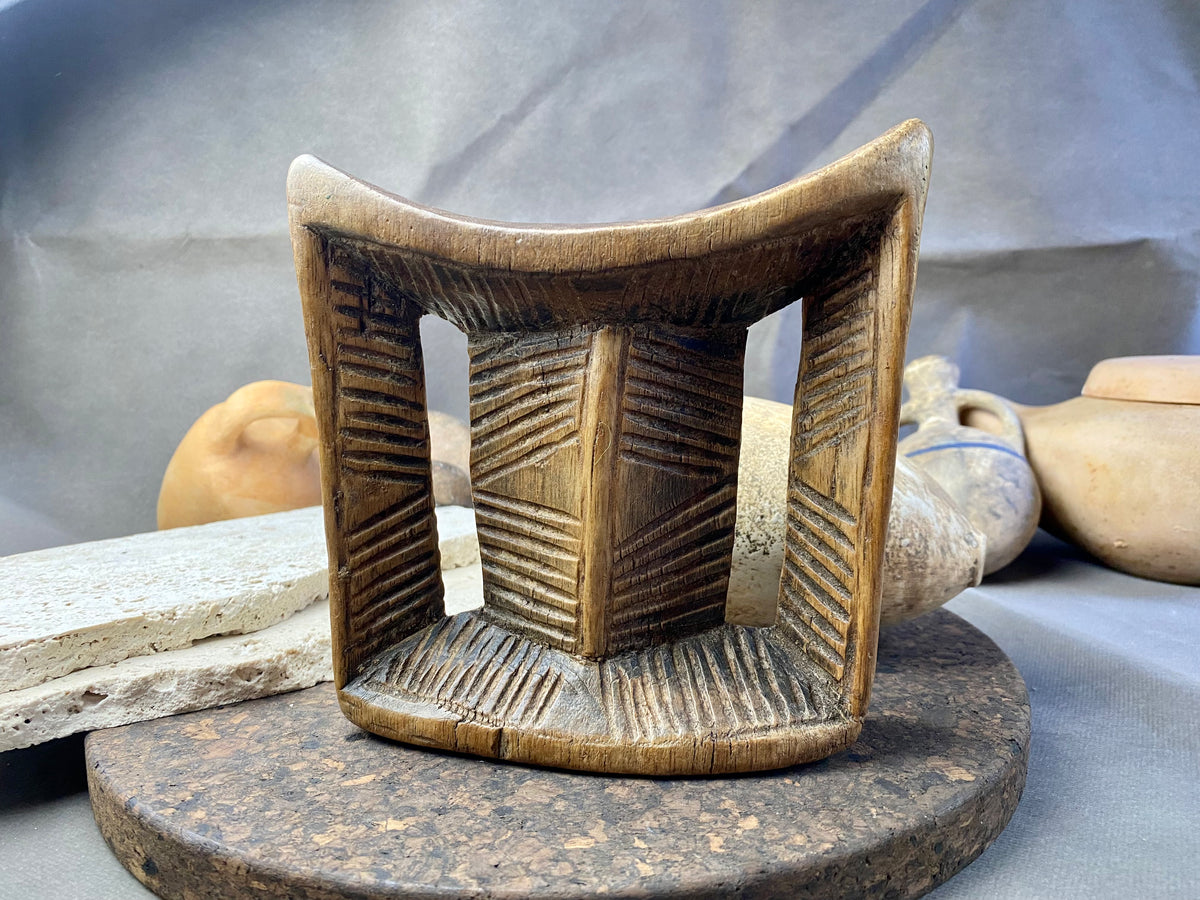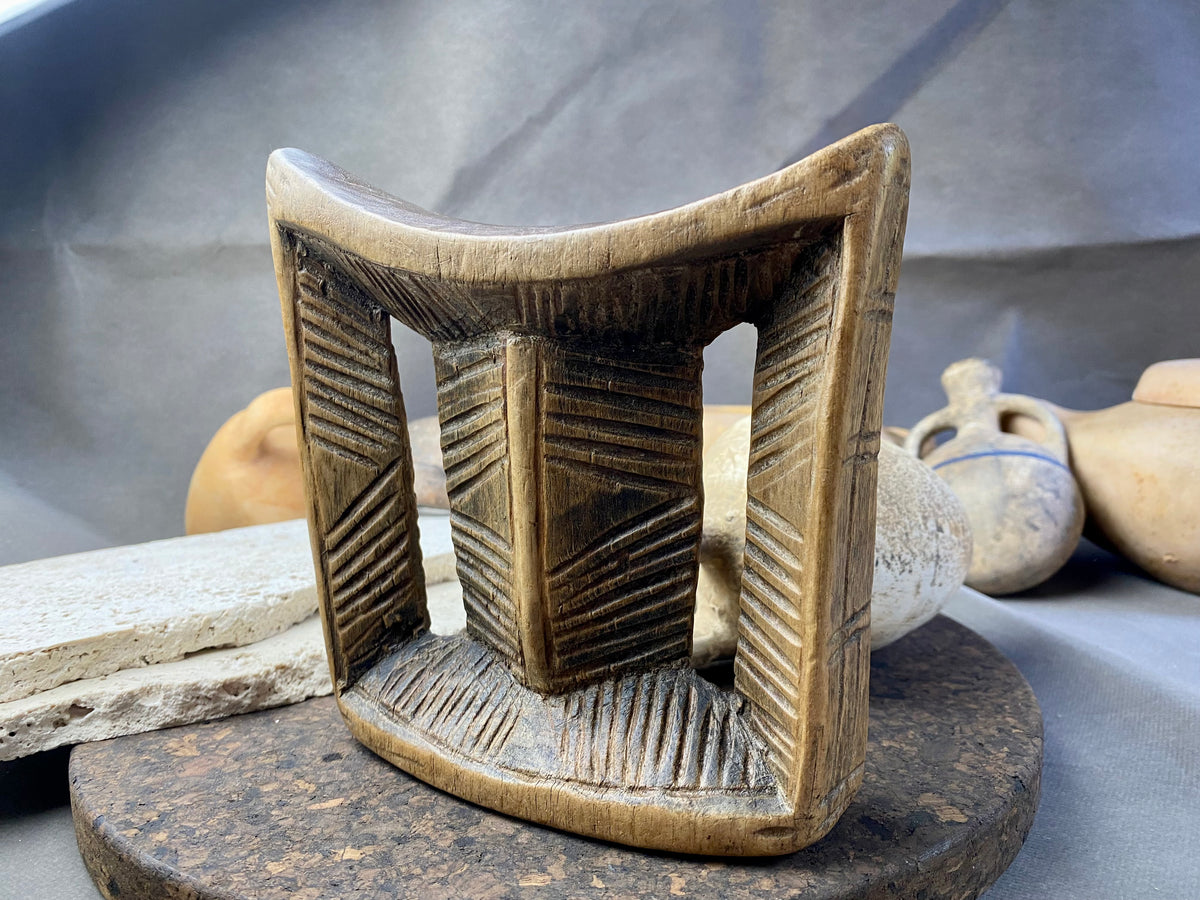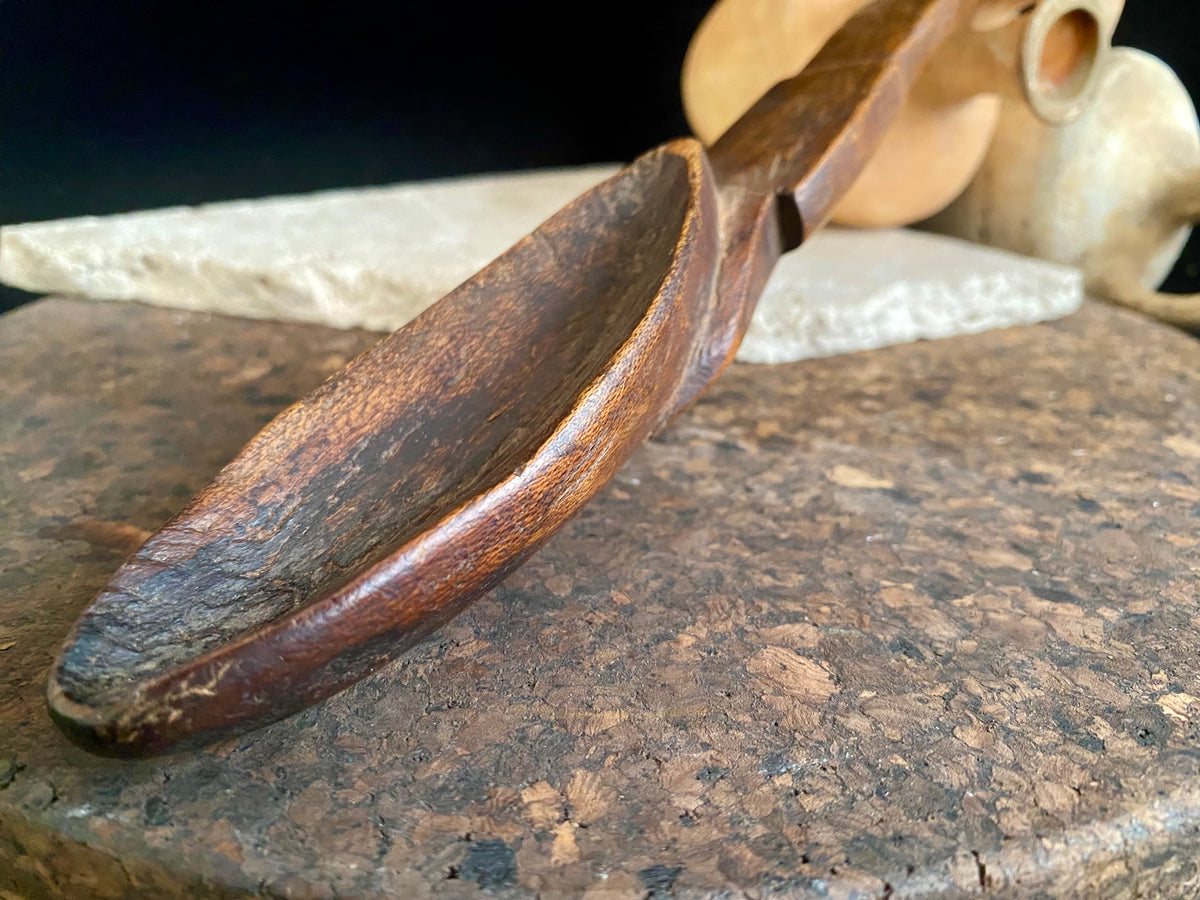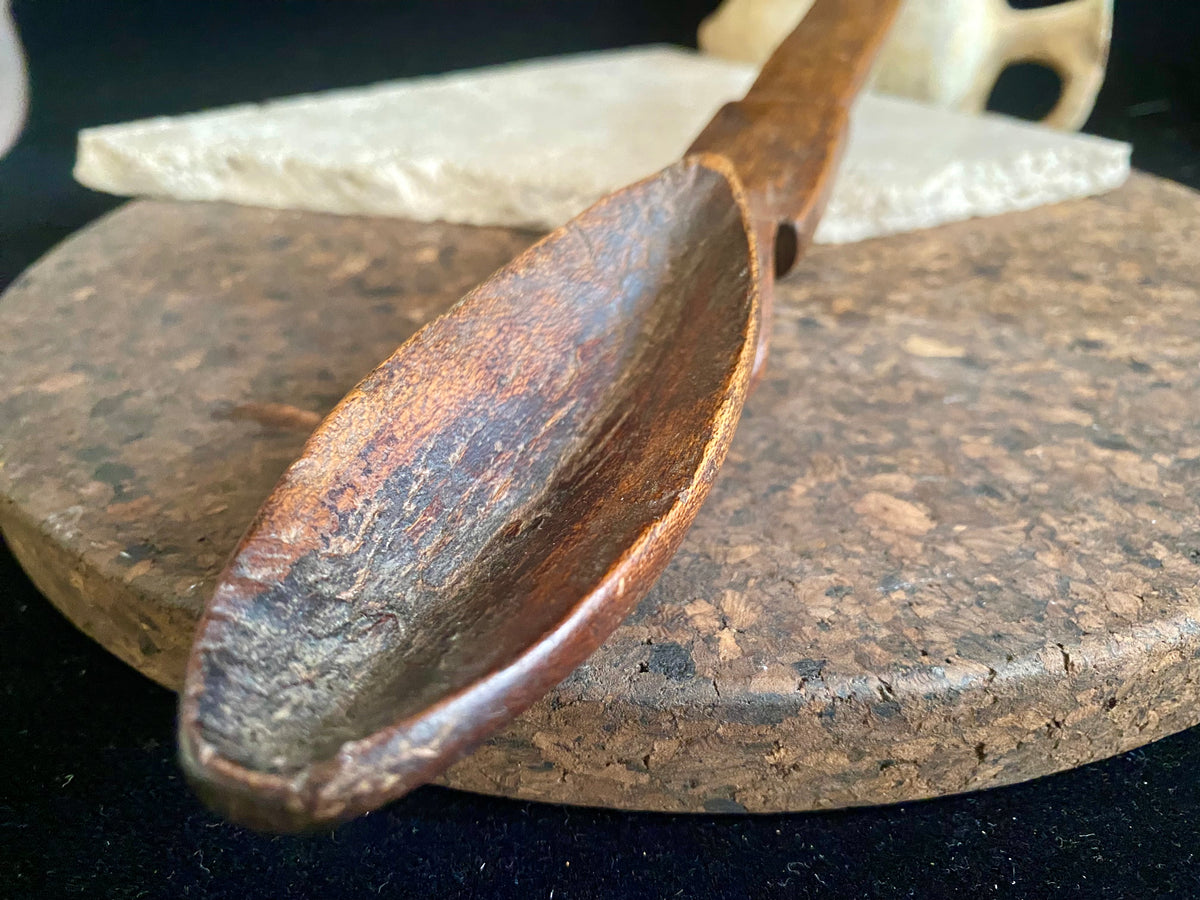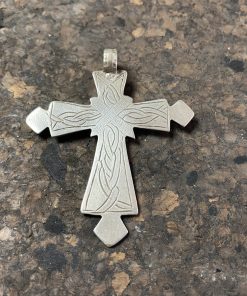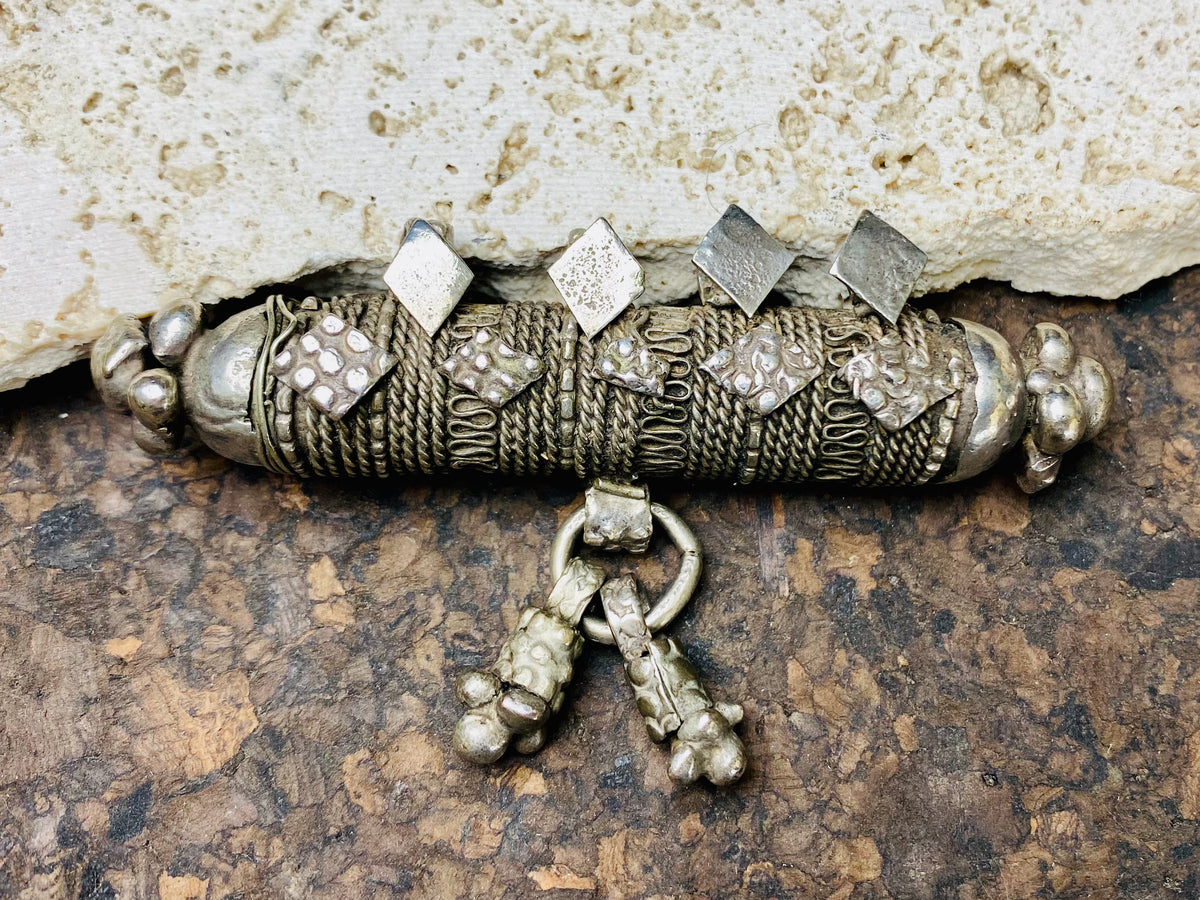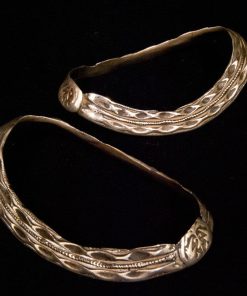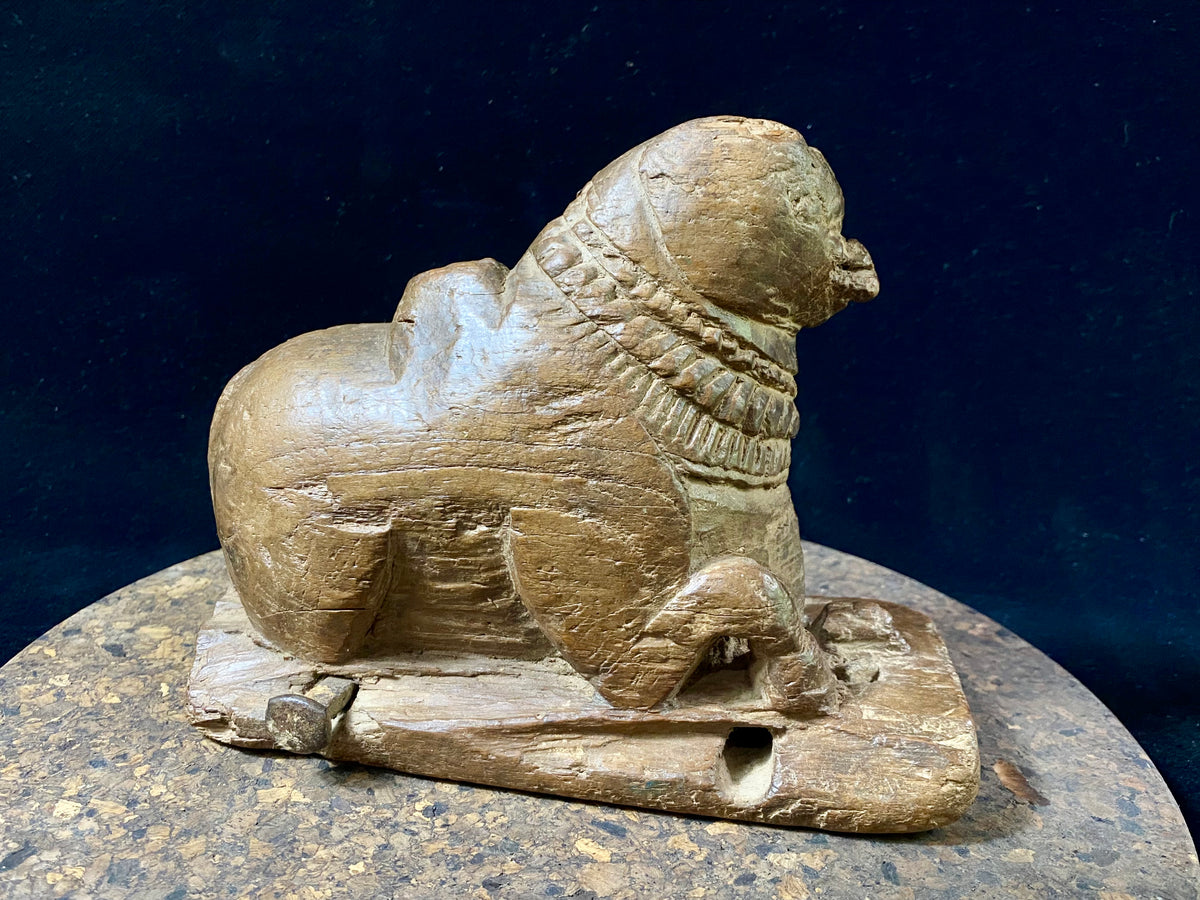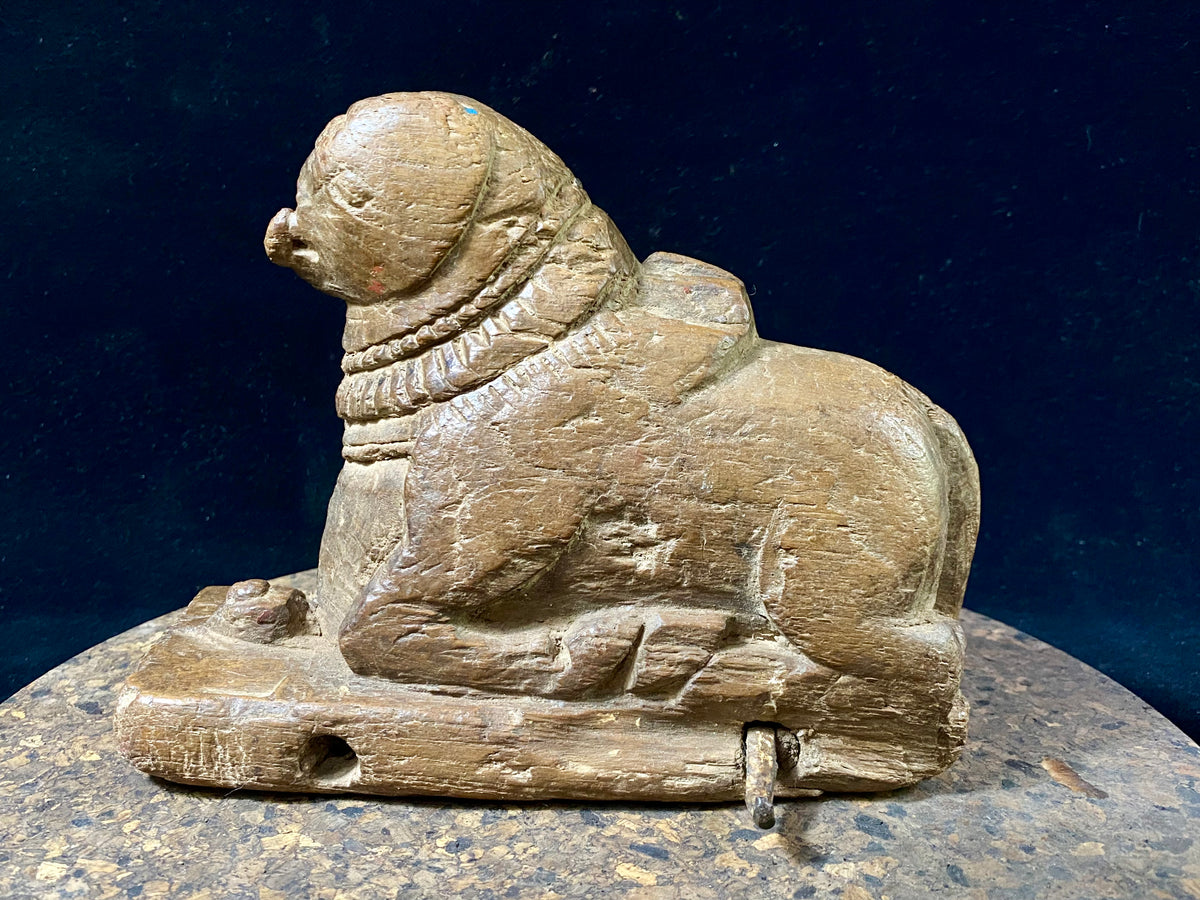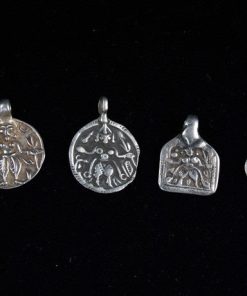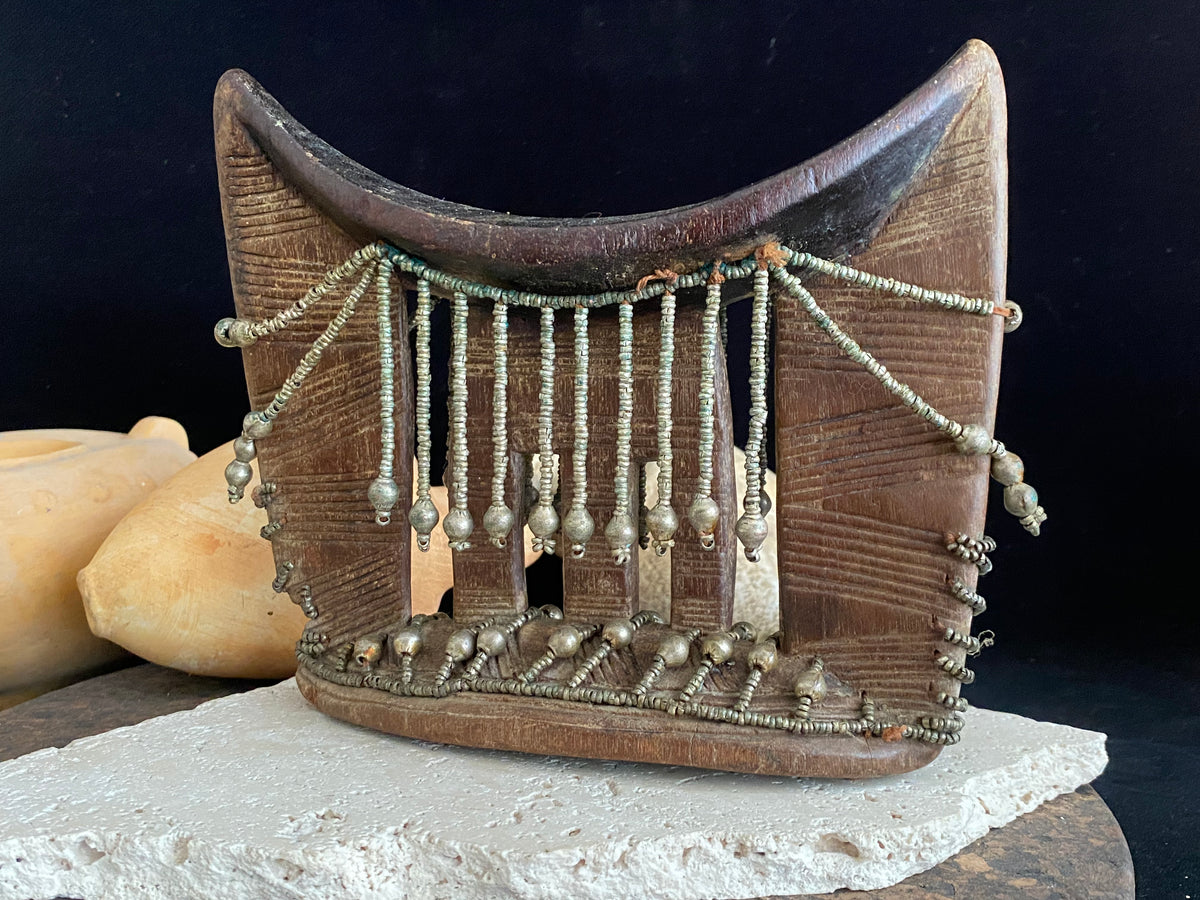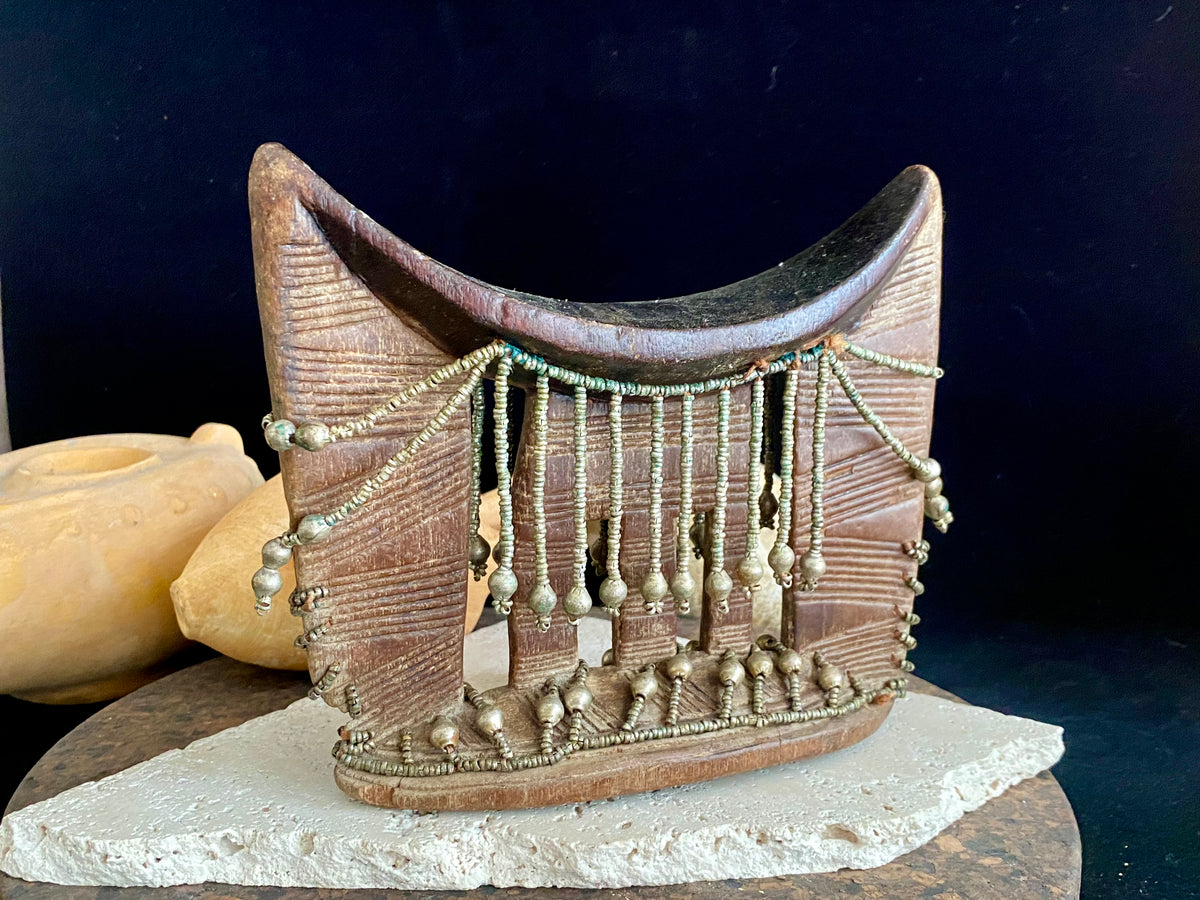Camel Bone Train Set Kashgar
$ 1.750,00 $ 437,50
Large vintage train set handcrafted by a master craftsman from finely cut and shaped panels of camel bone. Northern India. Circa 1980.
The set consists of four pieces:
- The track: measuring a very generous 1.2 metres in length, the track is raised on feet and is beautifully detailed with stops at each end to stop the train from ever running off its tracks. It’s also hinged in the middle for easy transportation and storage.
- The engine carriage: expertly crafted with attention to detail, the carriage consists of an engine room and coal storage space. The pistons work, as do the wheels.
- The passenger carriage: beautifully detailed, the carriage sits in the centre of the set.
- The passenger/engineer’s carriage: the smallest car, for passengers and the train’s engineer to sit at the rear of the train.
This delightful item is a must for any train enthusiast. Or simply perfect as an unusual and unique decorative item for your home.
Measurements:
Track length: 1.2 metres (47.25″) length x 8.5 cm (3.25″)
Engine carriage: 29 cm (11.5″) length
Passenger carriage: 22 cm (8.5″) length
Engineer’s carriage: 16 cm (6.25″) length
Camel bone has been used in India from ancient times for making utility articles as well as decorative ones. It is the ultimate in recycling and eco-responsible craftsmanship as it allows every part of the noble camel to be used after death. The art of camel bone decoration reached its peak in Mogul times, but is now considered a dying art form. Award-winning master craftsman and art conservationist Zakir Hussain has embarked on a crusade to protect the art of camel bone carving and decoration from dying out by instigating a mentorship program in conjunction with the Indian government.
Hussain says, “ I have seen a number of crafts at the brink of death in Rajasthan, and I make a point to speak about it during every summit or conference I attend. We have created a number of camel bone artefacts… What we need is a place to exhibit and sell these handicraft forms which is easily accessible to the public, locals and tourists alike.”
– Project Kalayatra, 2017

Fast Shipping and Professional Packing
We offer a wide range of shipping options owing to our long-running partnerships with UPS, FedEx and DHL. Our warehouse staff is highly trained and will pack the goods according to our precise and exact specifications. Before shipping, all goods will be thoroughly examined and safely secured. We ship to thousands clients each day across multiple countries. This is a sign of our determination to become the biggest online retailer in the world. The warehouses and centers for distribution are in Europe, as well as the USA.
Orders that contain more than 1 item are assigned processing periods according to each item.
We will inspect each and every one of the products before they are shipped. Most orders are now shipped within 48 hrs. The time to deliver varies from 3-7 days.
Returns
The inventory is always changing and we cannot completely manage it because of the fact that multiple stakeholders are involved, including our warehouse and factory. The stock levels may fluctuate at any moment. Be aware that it is possible that your order will be out of stock after you've placed your order.
Our policy lasts thirty days. If it's been more than 30 days since the date you purchased your item and we're unable to offer you a complete refund or exchange.
You can only return an item if it is unused and still in the same condition when you first received it. It must also be returned in its original packaging.
Related products
Statuary
Tribal Jewellery
Decorative homewares
Furniture
Tribal Jewellery
Candles & Candleholders
Pendants
Statuary
Statuary
Uncategorized
Table Top
